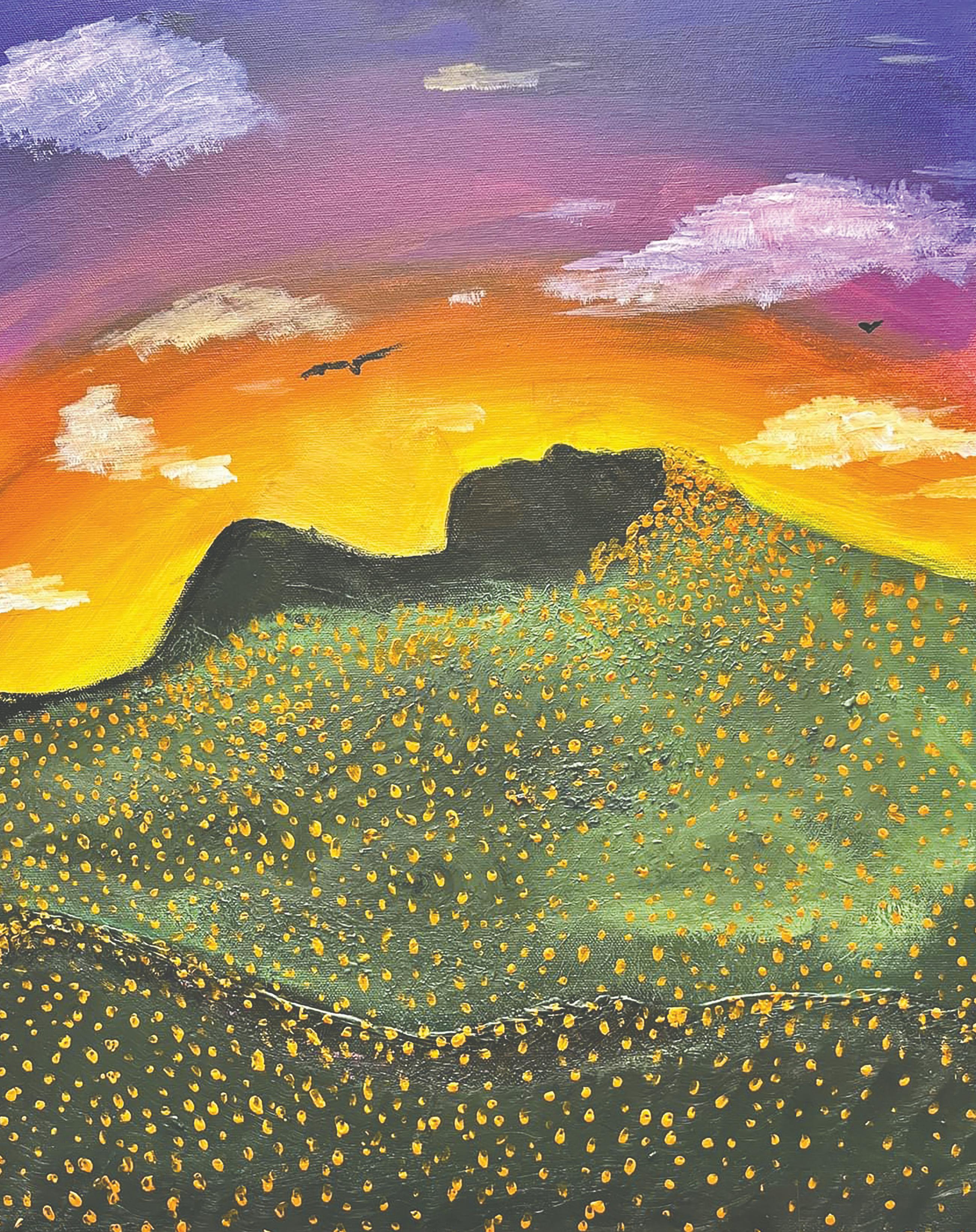








 by David Abbott
by David Abbott
As Miami Town Manager Alexis Rivera approaches his second year as the Town’s top administrator, his vision for the future has hit a few bumps, but he is dedicated to ushering in a new and prosperous era in a place that has seen fortunes come and go throughout its history. Rivera hopes to revitalize the Town of Miami by improving infrastructure and creating a welcoming downtown facade designed to bring visitors to town to participate in activities and spend money at local businesses.
We are going to continue driving that energy to elevate the quality of life for the people of Miami. That’s my goal.”
“I have my challenges because when you bring an aggressive agenda and big policy to a small region, people think no, it’s not gonna happen,” Rivera says. “It’s gonna happen.
Among the signs of progress around town is the imminent reopening of the community pool and upgrades to Veterans Memorial Park.
, Continued on page 22

Baseball has been America’s favorite pastime since the 1860s. On a sunny Saturday in March, 2024, the fans at Central Field in Globe got a living lesson on how the game was played way back then.
“This is 1861 Civil War era base ball,” says Jonathan Sukosky. “Out here there are no gloves or helmets.” (Note: It is tradition, in writing about vintage base ball to spell it out as 2 words, not the one word that is used today.)
VINTAGE BASE BALL,
Continued on page 10

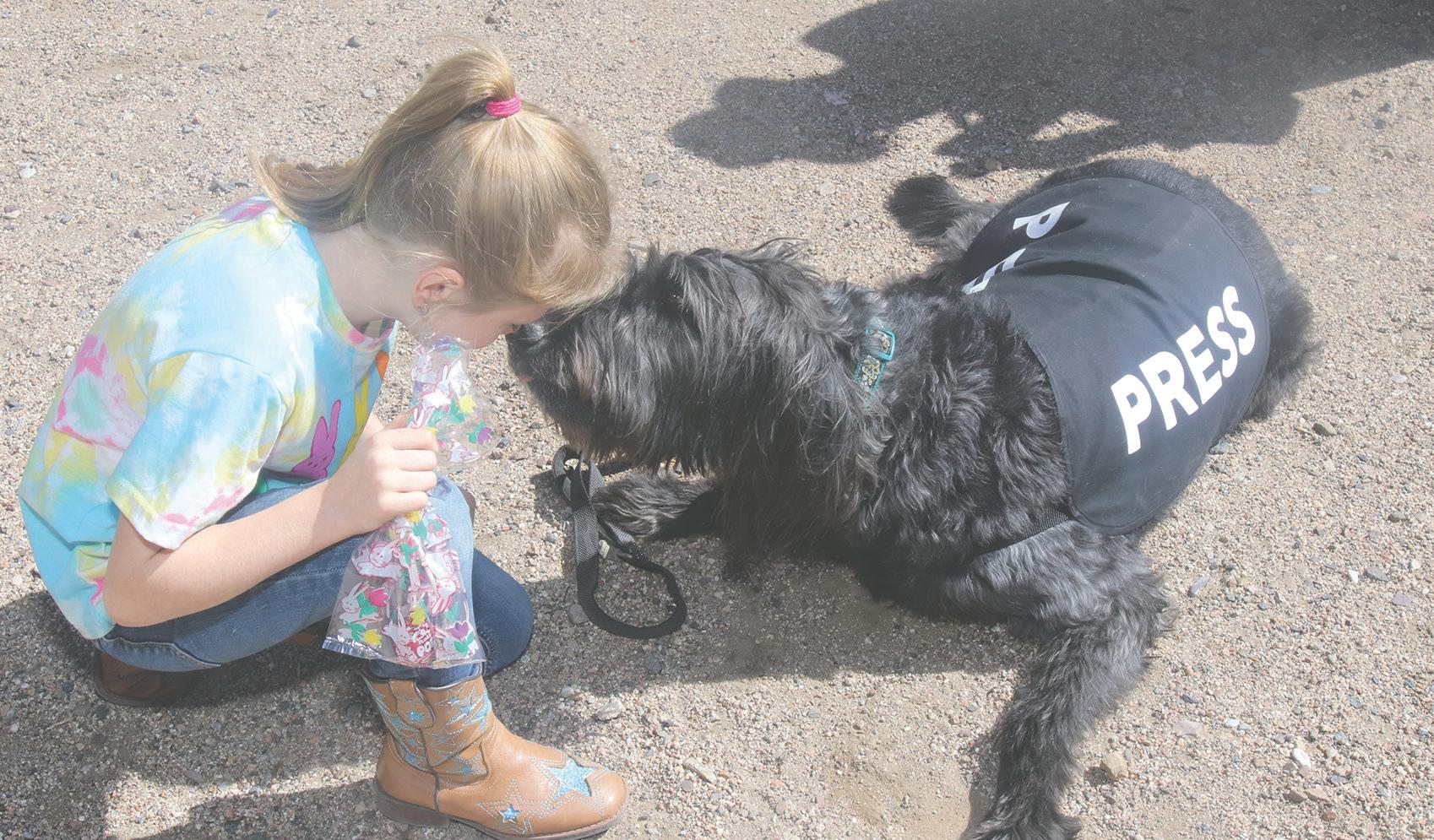
Gross was fortunate last year to adopt a Press Dog.
The Press Dog is a very rare variant of the news hound breed. Few people know its lineage.
The Press Dog was created when two separate breeds came together, as is often the case with dogs. On one Line the United Breed thrived and on the other, the Associated breed went way back into antiquity.
One day an enterprising breeder brought the Associated and United Breeds together to create the Generic Press Dog.
The Press Dog is universally known for its nose for news, of course, but there is more. Publishers worldwide have heralded The Press Dog’s uncanny ability to sink its teeth into the meat of a story. The Press Dog is perfect for editors who always have a bone to pick.
The Press Dog helps publishers dodge controversy with its uncanny ability to let sleeping dogs lie. The Press Dog can also keep publishers from barking up the wrong tree.
Publisher Linda Gross proclaimed her Press Dog as Deacon of The Pages, a unique and honorable title for such a hard-working newshound.
Look for a future column hosted by Deacon of The Pages titled “I have a bone to pick.”














Anyone who has seen the award-winning TV series Ted Lasso is familiar with the Diamond Dogs. If you haven’t, that’s OK. It’s a term used to describe a group of people who come together to help each other. In a community like Globe-Miami, we have lots of Diamond Dogs.
Our feature story on Alexis Rivera and his work as Miami’s Town Manager to bring in federal grant monies, address recent disasters like the fire on Sullivan Street and envision future projects is possible because of support from the local business community, the Mayor and council (most of them) and new relationships with funding partners - a good example of Miami’s Diamond Dogs coming together to support each other (p. 1).
I’ve been giving some thought to this concept around Diamond Dogs, and the ways in which organizations and individuals can both play a part in creating and sustaining the community vibe we call home. GMT is having lapel pins made with a DD logo. They are for anyone who wants to show they’re part of the solution. The image is of Gov. George W.P. Hunt, Arizona’s illustrious governor, Globe hometown hero and the original Diamond Dog for getting things done with the help of those around him. The lapel pins will be available through the Chamber and other locations. Stay tuned.

And speaking of dogs, our beloved press dog Deacon caught the eye of John Parsons this month while he was covering the Annual Easter Parade (p. 19). We were thrilled with his insightful missive on the Press Dog and its origins (p. 2)! After this, we’ll probably have to give Deacon his own column!
The spring weather is already warming up, but you won’t want to miss the annual Health Fair at the hospital on April 20, offering activities for the whole family along with health screenings and more. Also on the 20th, in the cool of the evening, the Cemetery Tour, hosted by one of our favorite Diamond Dogs, The Globe Downtown Association, offers a glimpse of Globe’s historical figures. And please join us on the 26th at the Silver Tap for our monthly cultural celebration of the Irish and Italian contributors to Globe’s melting pot. There will be live music, Italian culinary specialties, a quiz game and more.
As the Italians would say, arrivederci - till next time!
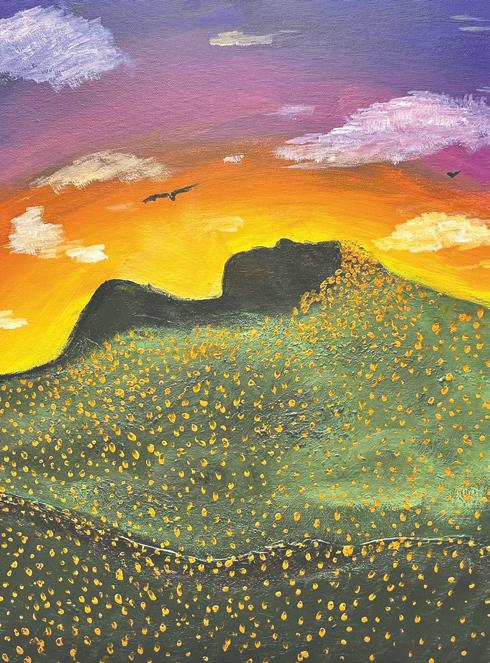





The summer of 2018, I visited Austin, Texas, intending to learn to dance the Texas two-step. I stayed for a week in a little Airbnb a half mile from the legendary Broken Spoke – the honky tonk bar and dance hall that since 1964 has become a landmark of country music, with live music on its stage five nights a week.
I went to the Broken Spoke as often as I could, wearing my best jeans and boots and summoning my courage just to walk in the door, much less get out on the floor. One night I got a group two-step lesson from none other than Terri White, whose father, James, ran the Broken Spoke for over fifty years. Terri grew up there, amid country music and dancing, meeting stars like Garth Brooks, George Strait and Dolly Parton. There could have been no one better to teach me the moves.
There were about twenty of us in the group, of all ages and types and sizes, and by the end of the lesson Terri had us all two-stepping to music from her tape deck. At the end, we did the Cotton-Eye Joe, and I had the time of my life.
One of the memorable moments from that lesson was early in the class, when Terri had us all pair up and taught us the proper dance posture. She picked a married couple to first demonstrate it – because proper dance posture for the two-step means being pressed firmly chest to chest.
“I know some of y’all aren’t going to want to do this,” Terri said, looking pointedly at a young woman. “Y’all’s generation has trust issues.”
Which brings me to Gladys McGarey.
Rewind all the way back to 1930, in northern India. McGarey was born there, in a village called Fatehgarh, on the banks of the Ganges. Her parents were two medical doctors from Ohio – her mother was one of the world’s first female doctors – and they spent most of their lives working as missionaries in rural India. They offered free medical care to anyone who needed it – including, one time, an elephant.
Gladys grew up assisting with the treatment of patients (including the elephant) and from a young age knew she wanted to follow in her parents’ footsteps. She studied medicine in the United States and passed her board examinations in 1947. She then married another doctor, had four children, and moved to Phoenix with her family in 1955.
Gladys McGarey is still practicing medicine at the age of 103, in Scottsdale.
McGarey’s approach to medicine is holistic – she believes that all aspects of a person are interconnected: body, mind, emotions and spirit. She was one of the first doctors to use acupuncture, and she helped found the American Holistic Medical Association. She has received numerous awards for her service and is often called the mother of holistic medicine – although some say it would be more appropriate to call her its grandmother or greatgrandmother now.
McGarey recently wrote a book, The Well-Lived Life: A 102-Year-Old Doctor’s Six Secrets to Health and Happiness at Every Age, setting out what she’s learned from her lifetime of practicing medicine (The edition for sale on Amazon has a cover illustration of a gray-haired woman riding a bicycle – which if you remember my piece on




Anne Mustoe, you know warms my heart.)
McGarey’s first secret is that you have to have “juice” –the reason you want to be alive, the thing that makes you want to turn toward life. In an interview, McGarey puts it this way:
“Whether youʼve lost touch with your juice or have never really given it that much thought, you can start by doing something—anything—that feels good. Start small. Think of ... the thing thatʼs keeping you going, and lean into it. Or consider a satisfying project you can tackle in a short amount of time. Make something with your hands, get up and clean behind your sofa, or repot a plant. Remember what it feels like to put your love into action simply for the sake of it.”
And that juice always has to be flowing – moving. McGarey’s second secret is movement. In an interview, she talks about the Sonoran Desert, and how deceptive its appearance is. To someone who sees it for the first time, the desert might appear still and lifeless. But as soon as you look closer, looking for signs of life, you see them everywhere – birds, lizards, insects, jackrabbits, coyotes, and more. The stillness was an illusion.
McGarey says the same is true of our lives. When we feel stuck – like we aren’t moving – that is only an illusion, she says. Something is always moving, and when things seem stuck, you just need to look for what is still moving – the “trickle” around the dam. Follow that trickle, and you can get moving again.
“The power of movement can get us through almost anything,” McGarey says.
McGarey says her own life’s purpose is to teach that in order to be truly alive, people need to discover their life force – their juice – and put their energy into it. This will lead to more than just survival, it will create joyful participation in life, with every breath.
“I’m talking about dancing a two-step with life itself, finding our willingness and our positivity to keep dancing no matter what it throws our way.”
Which brings me back to the Broken Spoke and what Terri White said about trust.
There’s a certain amount of trust involved in dancing chest-to-chest, heart-to-heart with life. And that trust is something you can only build by doing it.
Summon your courage to get out on the dance floor, take the risk, and you’ll find out there’s nothing to fear –and it’s a lot of fun, too. It will bring you back to life.
“Weʼre never done growing,” McGarey says. “And healing is never impossible. Itʼs always a good time to make a change.”
Patricia Sanders lived in Globe from 2004 to 2008 and at Reevis Mountain School, in the Tonto National Forest, from 2008 to 2014. She has been a writer and editor for GMT since 2015. She currently lives in the Azores. You can follow her writing on the website medium.com, under the pen name SK Camille.










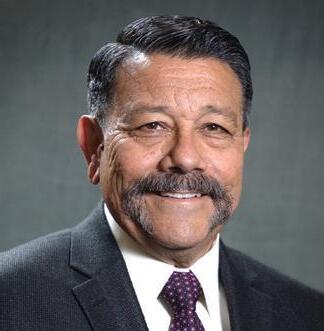
On March 6th a delegation from our city went to Washington DC to meet with our Congress representatives prior to the annual National League of Cities aconference. This delegation included Councilman Leetham, Councilman Gonzales, Economic Director Linda Oddonetto, and myself. Our Washington lobbyist arranged these meetings over a three-day span with Senator Sinema, Senator Kelley, Congressman Gallego, Congressman Staton, USDA, Army Corp of Engineers, and the Railroad.
We presented numerous projects with a funding request of $9,850,000.00 in appropriations to help bring these projects to fruition. We want to thank our staff for their hard work in preparing the documents used in the presentations. These projects included funding for the McCormick Wash project, funding for our new fire station, funding for our aging water infrastructure, funding for a community kitchen project, and funding for the Besh Ba Gowah project. The meetings were very productive as we spent time with staff at each meeting and explained our city needs.
We were then joined on the weekend by Councilman Shipley and City Manager Jepson for the beginning of the 2024 National Congressional City Conference with President Biden as the keynote speaker. This three-day conference
provides the opportunity to gather vital information on numerous issues that affect many cities throughout the United States. The conference also provides important information on the many grant funding opportunities and how to access them and apply for them properly. Another important part of the conference is the opportunity to network and hold discussions with other elected officials from across the United States that have similar issues to deal with.
A second public hearing was held on March 26th as law requires to allow public comments on this topic. There were no comments received and the council then approved Resolution 1887 to put AEL on the primary ballot on July 30, 2024. Home Rule has been on the ballot every four years since 1979 and has never failed. If it were not to pass, it would be detrimental to the services the city now provides to our residents. A Yes vote allows the city to continue to set its budget as presented and spend the money it collects.
Council approved a contract for $25,040.00 with RDH Environmental Services to install six flow monitors at


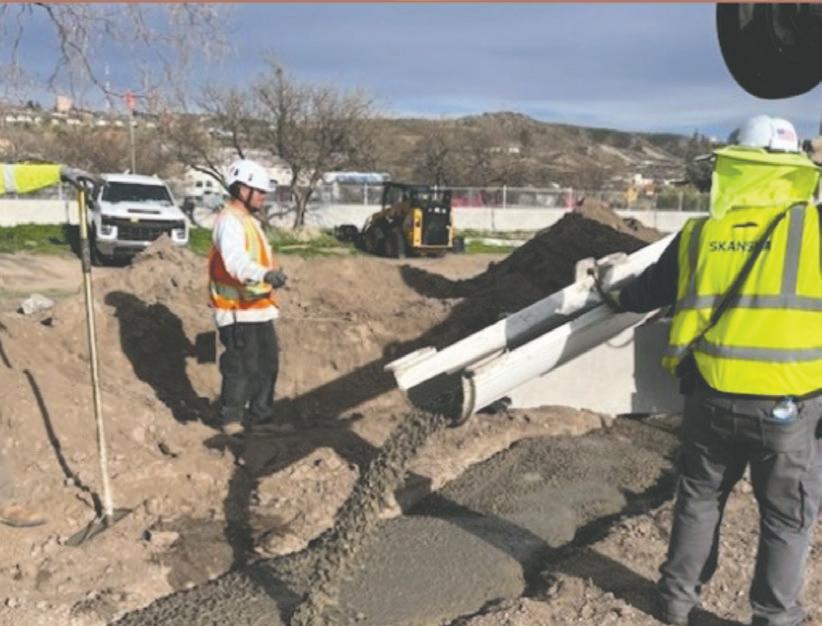
various locations throughout the city. This project follows up on our recent Northeast Corridor study and measures the city’s wastewater flow and actual capacity as we plan for future growth in that area
On March 26th, Council was given an onsite tour of the Connies Bridge project during the day. At the Council meeting that night, an updated presentation was presented by Project Manager, Shay More, from Meridian Construction and Lead Project Design Engineer, Matt Truitt, from the EPS Group. Shay explained some of the delays that have occurred on the project. One of the delays of four months was a quality control issue in regards to one of the underground shafts that had some voids and had to be remediated to pass inspection. Other delays are attributed to the supply chain and the Railroad process for inspection and approvals. There have been comments by the public about the height of the bridge. Design Engineer, Matt Truitt, explained that the bridge was designed more efficiently for water to flow with a longer span under the bridge and the pier design are more in line with the flow of the water compared to the original design of 102 years ago. The top of the bridge will be three lanes wide with a walking path and the bridge will also have lighting for better visibility at night. They plan to pour the deck at the end of April with an anticipated completion date of June, pending passing all final

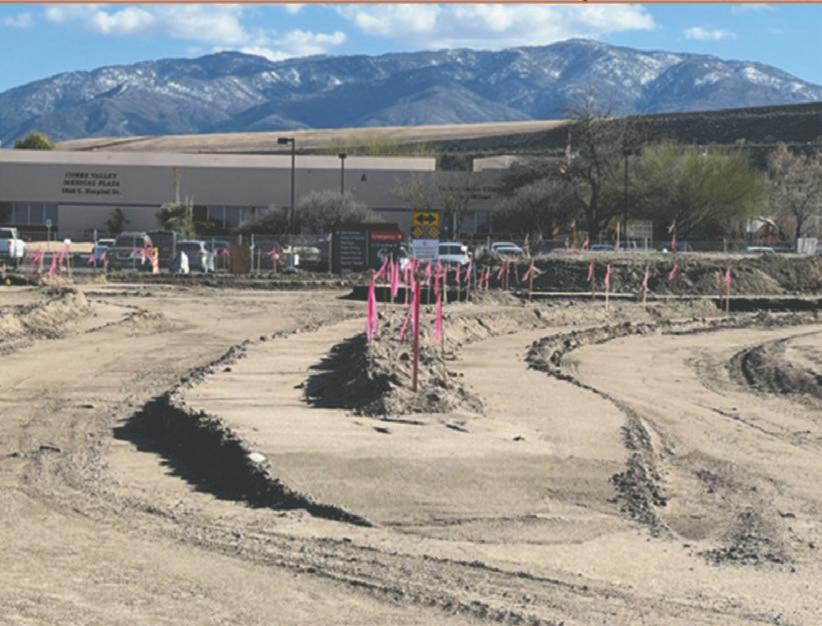
Safety is our First Priority! Please avoid distractions while driving and obey posted speed limits in construction zones
inspections, which include approval from the Railroad Company.
On March 22nd, the staff from the Discovering Arizona Campaign and the office of Tourism came to Globe and conducted an interview session. The campaign is focused on providing a voice that is heard from different communities as we shape the future of Arizona’s story.
The interview was a 1.5-hour videotaped interview held at Bravo. John Wong, Tracie Quick, John Daniel, Adrianne Villalobos, Linda Oddonetto, and I were invited to the interview. The interview will be aired soon on #DiscoveringArizona.
First Fridays have become a monthly signature event and continue to grow each month with more participation from downtown businesses, vendors, and cruisers. This event is not only enjoyed by our local residents in the community, but by many more people who are now coming from out of town on this day to enjoy the event. Everyone is invited to participate in the downtown cruise that begins at 5:30 pm starting at the Active Adult Center. We invite the community to come downtown and support the participating businesses and enjoy live music, food trucks, and vendors. Anyone needing more information or wanting to set up a vendor booth during any First Friday event may do so by contacting Melissa Steele at 928-425-7146.
• Additional rain delays in March have continued to impact construction progress.
• All known utility relocations have been completed.
• Work is underway with final site grading, surveys, and drainage improvements.
• Preparations are proceeding with construction of concrete roadway curbs, sidewalks and gutters installation.
Major construction activities expected to be complete by end of May 2024.
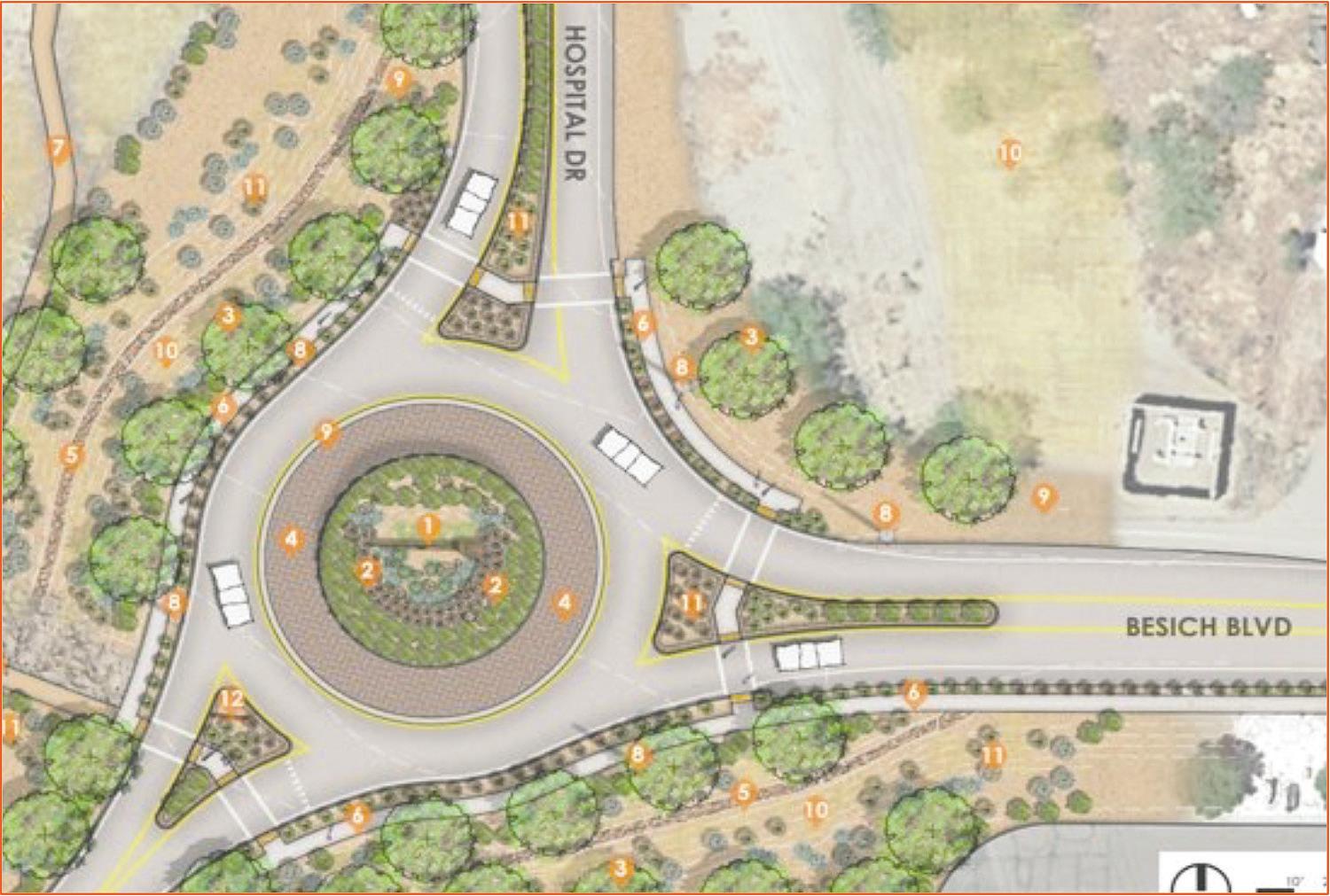

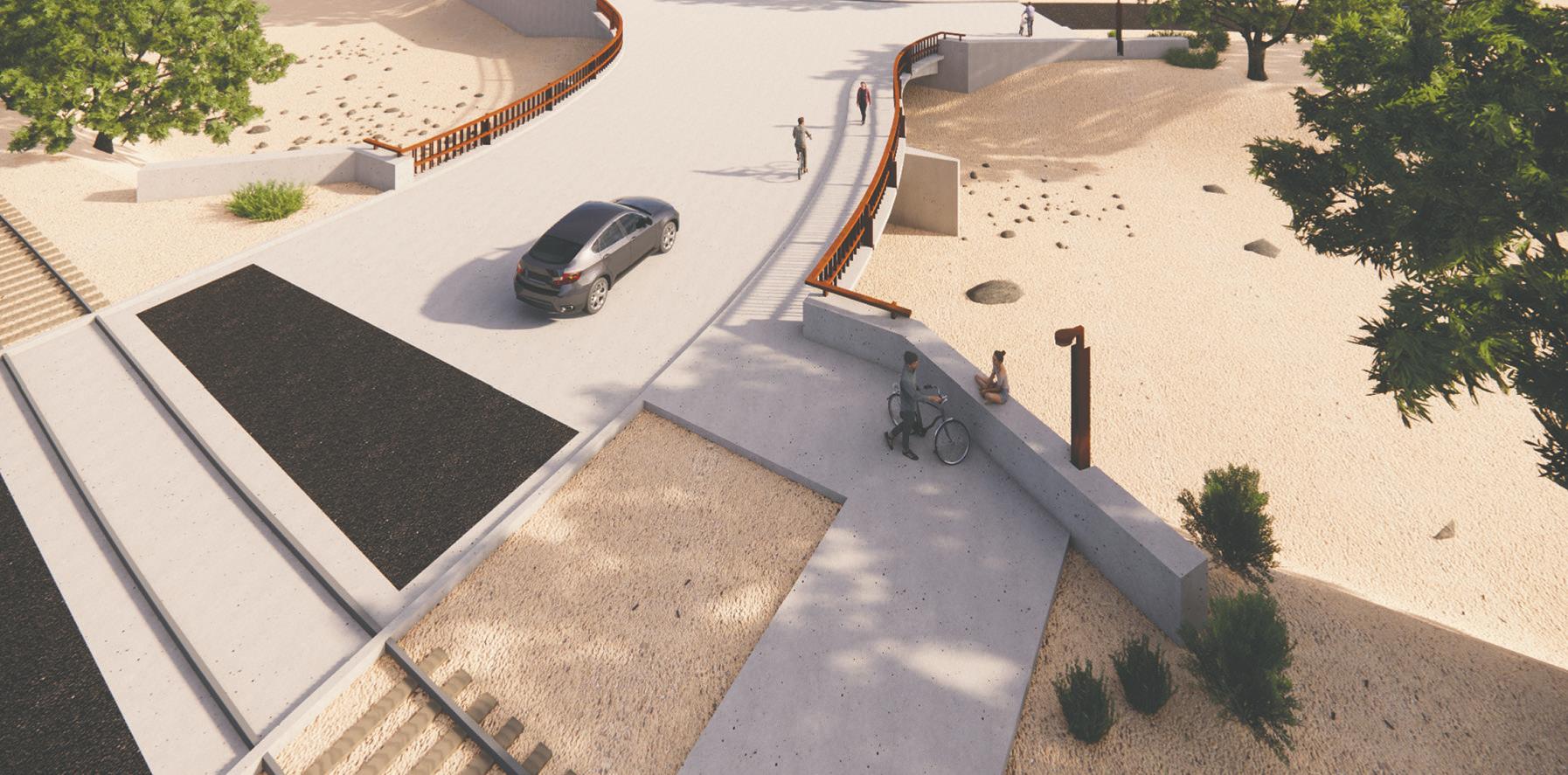
After several months of unforeseen delays, the new Connie’s Bridge is expected to be open for traffic in June.
Completion of the Upper Pinal Creek Bridge Project, as it is officially known, represents a significant milestone in the rehabilitation of Globe’s aging infrastructure as the City focuses resources on building toward the future.
“We’re working with all our partners to make sure it’s done right,” says Globe City Manager Paul Jepson. “Our most important concern is quality: We’re focused on getting it done right, rather than getting it done fast, and we’ll be flexible on the timeline if need be.”
The project broke ground in January 2023 and was initially slated for completion in October 2023. Due to 37 days of bad weather, supply chain issues that added about four months to construction and the necessity to readjust 40-foot deep shafts to hold the new bridge’s pilings, another four months, the project fell behind due to circumstances beyond anyone’s control. And deck modifications to line up bridge elevations with those of the surrounding roads will add another six weeks to the process.
In addition to the physical delays, the City has had to coordinate with several outside entities, Arizona Eastern Railroad , representatives of the Federal Railroad Administration , as well as EPS Group, our project design firm from Mesa, who are working in conjunction with Meridian Construction, the company building the bridge.
The new bridge will be situated to the southeast of the original Connie’s to line up with Hill Street, creating a more natural merge onto Jesse Hayes Road, with a righthand intersection for access to Ruiz Canyon and Buena Vista roads. It will be wider to accommodate pedestrians and ease traffic and is designed to fit more naturally with the flow of Pinal Creek to reduce the impacts of debris washed down the creek bed during floods. The intersection should also be less confusing for drivers with additional upgrades to South Hill and Broad streets around the bridge intersection as well.
It will also enhance the sidewalk project that is in the works to make Jesse Hayes Road safer for residents, pedestrians and cyclists.
“This bridge will be much more efficient because of its design,” Jepson says. “Our priority is to build it right, there’s no do-overs. The last bridge was used for 100 years and we want this one to last even longer.”
Emblematic of the City’s vision for the future, the new Pinal Creek Bridge represents not only a bridge connecting two parts of town, but also serves as a metaphoric bridge to the future that embodies the goals of a City Council working to bring state and

federal dollars to the community in order to build new infrastructure and rehabilitate what already exists.
“With all the development at the Community Center and the potential development of Rayes Ridge, it’s pretty critical to have access to that area,” says District 2 Councilman Mike Pastor, who represents citizens in the immediate area of the site. “I’ve heard concerns and some people are worried that the design isn’t as good as the original, but I think they’ll be pleased with it once it’s done.”
Another important aspect to the work is emergency access to Jesse Hayes Road, the location of vital pieces of local infrastructure including the Gila Pueblo Campus, the Community Center recreation complex, including Besh Ba Gowah Museum and the City pool, as well as the Globe Ranger District compound.
“It’s one of the main arteries that connects the east side of town to the west side of town and that’s critical,” says Globe Mayor Al Gameros. “I think the importance of this project is not just for the safety of the community, but to further our vision on creating a link between that important community and the rest of town.”
Due to its updated design, the bridge will also enhance flood mitigation efforts on Pinal Creek that have been instituted by Gila County in the wake of major monsoon flooding in the past few years.
“We’ve learned in the last series of big floods that something needs to be done on that creek,” Jepson says. “I think we have a very slim margin of error and have to keep the waterway in prime shape.”
The final total for the project is expected to be around $5.6 million, offset by our initial appropriation from the State of Arizona for $2.8 million, in addition to an intergovernmental agreement with ADOT for the Hill Street Corridor at $1.1 million, for a total of $3.9 million.
The City has budgeted $3.9 million to the project in FY2024, with portions coming from the Gila County ½ cent excise tax and Highway User Revenue Funds.
“It’s important to get this much funding coming to rural Arizona, because there’s no way we would be able to afford to do all these projects,” Gameros says. “It’s vital that we get assistance from the federal and the state governments in order to move these projects.”






Every day, Mike Shirley walks or drives up the hill from his house to Golden Hills Nursery & Feed – an oasis of plant life in the middle of the desert. He’s been running the nursery for 50 years. Now 83, he continues despite health woes.
“I get up here and I feel better being around plants,” he says.
He opened the business at 5444 E Golden Hill Rd with his mother, Ann Shirley, in 1974. Today, the shack that serves as his office is wallpapered in sticky notes. The store bursts with everything a gardener could ever need. The tree lot is full of saplings in pots. There are roses in abundance, and the greenhouse is popping with peppers.
Mike likes how the shop keeps him busy and active. Something to do every day.
”I think of this place as an urban farm,” he says.
Though his mother died in 2001, the small family nursery and feed store teems with life – flowers, herbs, veggies and trees, chickens and bunnies, and people who enjoy plants. Mike’s customers include both out-of-staters and longtime locals. He likes to see people take an interest in plants and how plants beautify a community.
“We take plants for granted,” Mike says. “Our food, medicine, books, buildings… pretty much everything in our existence comes from plants in one form or another.”
“It’s a very seasonal business, busy in the spring and fall,” Mike explains. “Winter’s a dud. Summer is good until it gets real hot.”
The first years in business were the most difficult, economically. His wife, Linda, works in mining, and they always got by on their combined income. They’ve been married for 56 years and raised three children. Each worked at the nursery before they left home for college.
“They weren’t always willing, but they helped out,” Mike says. “They got a lot of value out of it.”
The kids are all grown now, with college degrees and families and careers of their own.
“I think that’s success – raising a family and sticking together, as much as possible,” says Mike. “Economically and psychologically, we need each other.”
In 2020 and 2021, the pandemic produced the nursery’s highest sales ever. People didn’t want to go to the big valley stores. Mike was swamped, and Golden Hills reached its normal annual revenues in the first six months of the year. As sales got back to normal, Mike saw a lingering positive effect. “It improved people’s perception of plants,” he says.

“I think that’s success –raising a family and sticking together, as much as possible. Economically and psychologically, we need each other.”
– Mike Shirley
As a small business owner, Mike has long relied on a dynamic band of part-time help. Qualifications for the position include the ability to communicate with customers, some knowledge about gardening and good physical fitness.
Kelly, a rancher, works part-time taking care of the nursery’s animals, doing dump runs, and helping Mike out with the computer. Wendy Ehlert, a retired school counselor, helps out 15 hours a week in the winter months and early spring. She enjoys working outdoors and talking with the customers.
“I love the herbs and the fragrant flowers, the bunnies, the color,” she says.
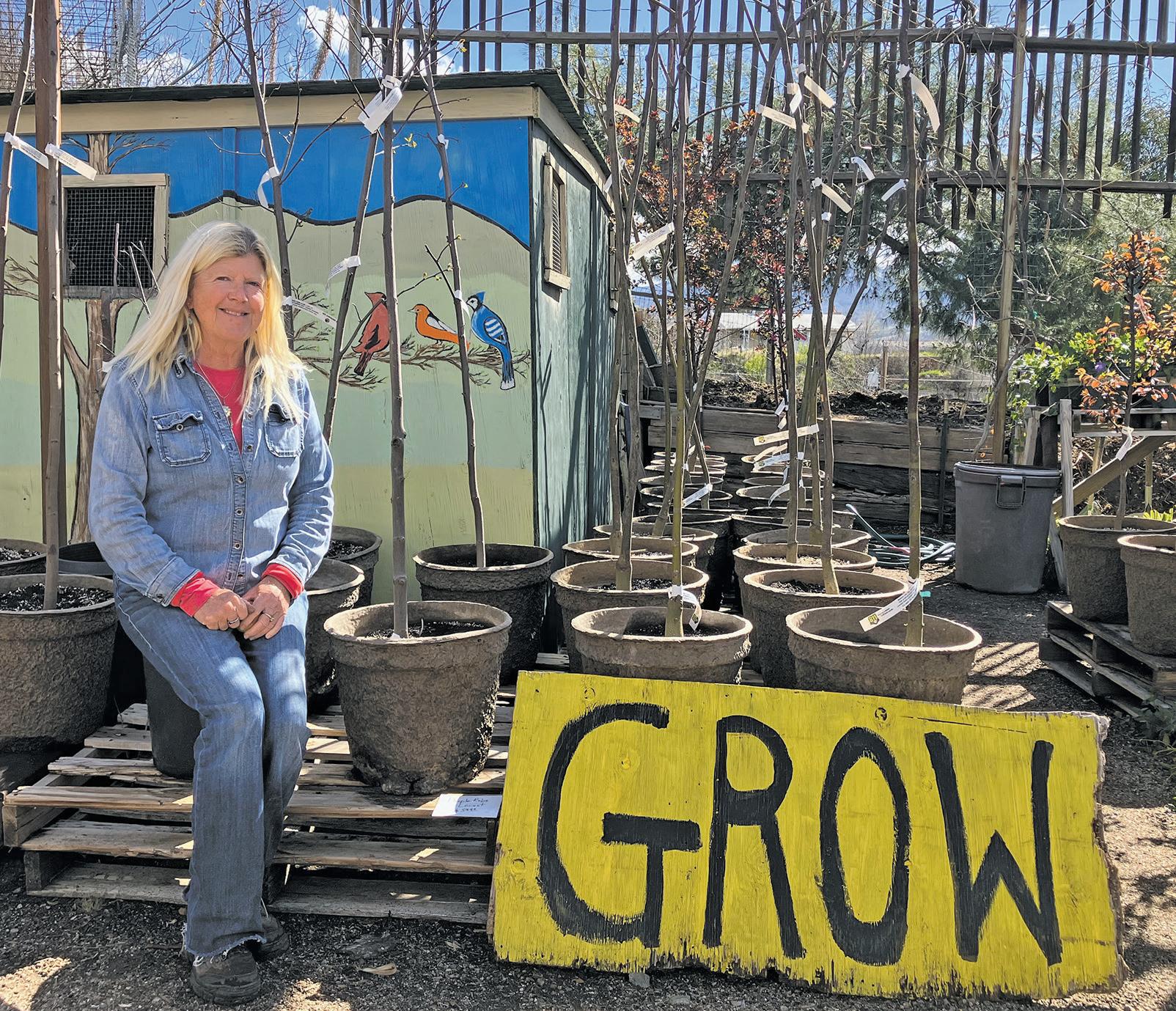
Wendy also helps out with the business aesthetic, painting new signs and the office exterior with colorful birds and ocotillo.
“One of the great things about working at Golden Hills is that Mike supports my creativity,” she says.
The eldest of Mike’s helpers is Robert Mari, 86, who once owned his own nursery and has a large truck and landscaping trailer he drives down to the valley to transport plants to the shop.
Jeremiah Eichler, 18, is the youngest plant enthusiast to join Mike’s crew. He’s been helping out on weekends for about two months, but has been coming to the nursery for two years, ever since he had a car. He waters and repots plants, mixes compost, cleans the animal cages and helps keep the place tidy. He helps customers find what they’re looking for and loads their purchases into their cars.
“It’s pretty fun,” he says. “Not too hard. Not super easy.”
Jeremiah says the experience will help him apply nursery-quality care to his own home gardening – tomatoes, fig trees, and berries. A 2024 GHS grad, Jeremiah participated in the ag program all four years. For one project he grew a garden bed from seeds and sold plants at an FFA benefit. He thinks someday he might like to start a nursery in a town that doesn’t have one. For now, he’s happy to work for Shirley.

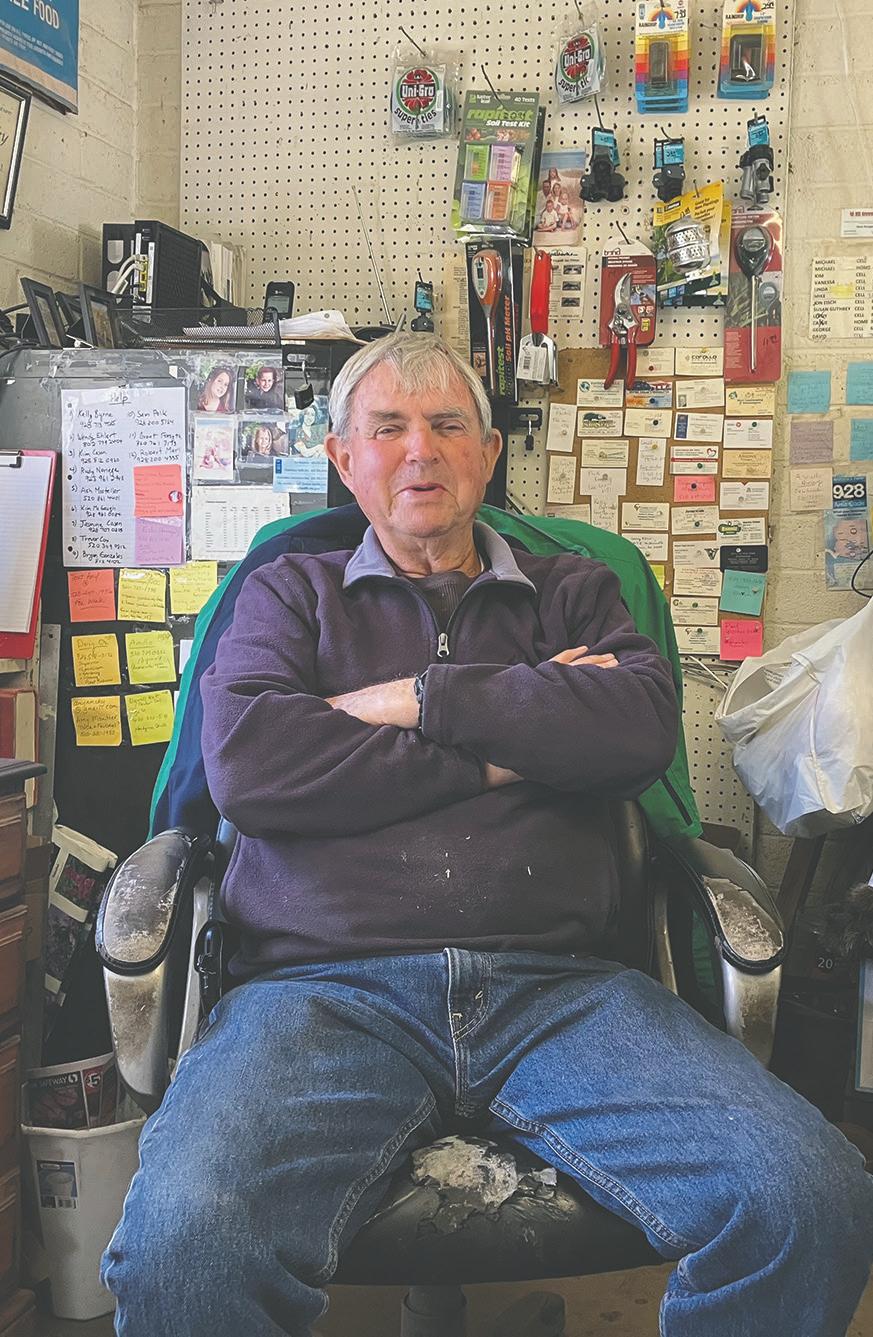




This month, GMT’s new series exploring our cultural roots will focus on Globe-Miami’s Italian and Irish heritage. Our local restaurants, BRAVOAmericano and DeMarco’s Italian Restaurant will offer Italian dishes (see below), and our Special Event at the SilverTap on Friday the 26th will feature music, dance, limericks, and love poems.
Coming up:
May: Mexico – May 22-25
Tamales to Toasts: A Culinary and Cultural Ode to Mexico’s Culinary Legacy
July: American – July 24-27
Stars, Stripes, and Spice: Celebrating America
August: Slavs – Aug. 21-24
Savoring Slavic Traditions of Globe-Miami
Katherine Bairo Kellner was born in Cerie Torino, Italy. Her father Bob, came to this country in 1903, followed by his wife Angelina, and a daughter settling first in Cripple Creek Colorado. “He was a fine musician, playing clarinet and instrumental in organizing the Miami Copper Band in 1914. He played for dances at the Dreamland Hall in Miami and other venues. His wife Angelina operated several boarding houses that catered to young men, mostly from Italy and Spain, including Bordo Italiano at the old Black Warrior mine and Fior D’Italia, built by Louis Trojanovich in 1915.
Angelo Martimbianco came from Selva, Italy, in 1912 and worked at the Old Dominion Mine before starting a grocery business with his brother in 1921. He shortened his name to Martin, and all his children used that name. The store, Martin Brothers Grocery, operated successfully until the Great Depression of 1932, when the brothers went broke.
Giovanni & Joseph Cubitto, the brothers immigrat ed from Italy in 1905. Joseph would make the biggest impact in Globe, opening his jewelry and watchmaking business on Broad Street in Globe. From his first investment of $80 in a set of jeweler’s tools, he continually prospered and enlarged the store. Cubitto Jewelry Company became one of the largest and finest stores in the area. He married Mary Brand in 1909 and the couple had three sons. Mary died of the Spanish Flu in 1918, and Joseph remarried Marie and had two more sons. Their youngest son, Claude continued the business until his death at which time his daughter assumed the helm. She operated it until the mid-1990s when she closed the business after 90 years.
Peter Paul and Carlo Luis Coppa Their parents, Luis and Benita Coppa, immigrated from Turin, Italy, in 1913. Both boys attended school here, and Carlo Copa would go on to own Economy Produce (located where Globe City Park is now). During the 1950s, he was co-owner of the Supreme Liquor Store with his partner Louis Ellsworth, and later, the two men owned and operated C&E Lumber Company. Carl served as Ward 6 councilman for two terms.
716 N. Broad.





The William Ryan Family William Ryan was born in Tipperary, Ireland in 1858 and came to the United States in 1878, arriving in Globe in 1881. As a young man, his first job was mail carrier to the old McMillam Mine and later night foreman of the Old Dominion smelter. He also conducted a large business in buying and selling cattle. In 1898 he opened up the Pioneer Dairy and six years later founded the Ryan Drug Company with stores in Globe, Miami, and Superior. It later became the Ryan-Evans Drug Stores in Phoenix. The Ryan Store began in August of 1904 when it carried books, periodicals and stationery. In 1907 J.J. Molony became associated with the firm and a line of sporting goods was added along with phonographs and records, guns and ammunition and a special feature made of baseball supplies. The next year, 1908, the company was incorporated and the drug and prescription department was added. Mr. Ryan was widely known for his Irish humor and interest in baseball. He was a member of the Arizona State League and active in the Globe Bears Baseball Club. He also served two terms on the Board of supervisors.
His son Joseph Ryan, was instrumental in expanding the Ryan Evans drug stores to 33 locations throughout the Copper Corridor, Glendale and Tucson. He was also director of the former Arizona Edison Co. and spearheaded its 1952 merger with Central Arizona Light and Power Company, from which emerged the present Arizona Public Service
John Joseph Keegan rained as a telegrapher and having worked as a train dispatcher, came to Globe in 1898. However, he did not follow either of these trades as he entered into the city’s mining and commercial ventures. He purchased Bert Young’s liquor establishment, made improvements in the place, and not only kept the former clients but added new ones. He was later connected with Dealer’s Ice and Storage business. In 1908, he took over the Copper Belt Realty Company. He and his wife, Jennie, had three children, William, John and Hazel.
Profiles courtesy of the centennial book by Donna Anderson, Globe, Arizona, published in 2007.

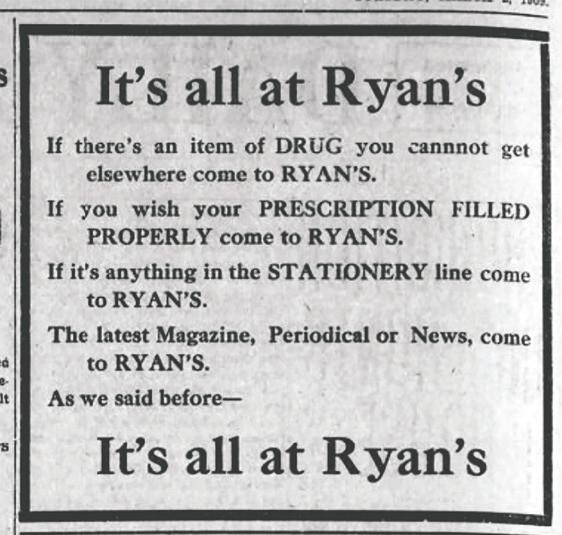







Tales & Tasting Traditions at The SilverTap.928 April 26th • 6-9pm • 230 N. Broad Street, Globe
This month, we will blend our celebration of Irish and Italian, in light of the fact that we had to postpone Irish night as the Silver Tap completed its remodel. So plan to join us on Friday, April 26th at the SilverTap in Historic Downtown Globe for a wee bit of merry-making, celebrating the The SilverTap.928 with its new stage and dance floor.
Come watch the Irish Dancers, and enjoy a lively duel of limericks and love poems performed by our very own Irishman and Italian bards.
And enjoy our local Italian fare from Bravo Americano and DeMarco’s Restaurant!
Bravo Americano features an Italian-made, wood-fired oven, with copper tiles perfect for producing their wide selection of thin crust, exquisite pizzas. This month in recognition of our Irish/Italian neighbors, they will be offering up

Classy Margherita
A quintessential Italian dish, pizza Margherita is a simple yet delicious creation that showcases the flavors of Italy. It features a thin crust topped with San Marzano tomato sauce, fresh mozzarella cheese, basil leaves, and a drizzle of extravirgin olive oil. Legend has it that the pizza Margherita was created in Naples in honor of Queen Margherita of Savoy, featuring the colors of the Italian flag: red (tomato sauce), white (mozzarella), and green (basil).
Pasta Fagoli
During the early 1900s, when Italian immigrants were settling in mining camps in various regions, a popular dish among them was “Pasta e Fagioli.” This rustic and hearty soup translates to “pasta and beans” in English and was a favorite among miners for its simplicity, affordability, and nourishing qualities.
Globe-Miami’s favorite Italian Restaurant serves a variety of Italian favorites, from Chicken parmigiana and spaghetti to pizzas and burgers. This week, they’re featuring their signature Eggplant Parmigiana and Cannolis!
Also known as Melanzane alla Parmigiana in Italian, originated in Southern Italy, particularly in the regions of Campania and Sicily. The dish consists of thinly sliced eggplant that is breaded, fried, layered with tomato sauce and cheese and baked until bubbly and golden.
Cannolis, beloved Italian pastries, originate from Sicily, an island known for its rich culinary heritage. The word “cannoli” itself translates to “little tubes,” referring to the desserts’ characteristic shape.

• Your MC for the evening is Margo Flores
• Serving up Guinness and Peroni beer. For a selection of wine, see John at BravoAmericano or Evodio at DeMarcos and they will set you up!
• Live Music and Italian Melodies
• How well do you know your Irish/Italian Traditions?
Our Lively Quiz will test your knowledge. Prizes will be awarded!
• Popcorn “on tap” courtesy of Hollis Cinemas.
• Bernadette of Round Mountain Baking Company will be set up outside the bar with a selection of cookies and Italian sodas!
• Prize for best dressed Irish or Italian lad or lassie!
• Submit a name to us and tell us if you want a Limerick or Love Poem. We will compose one and perform it on Friday, April 26th at The SilverTap.928.
• Suggested $10 donation to the Kip Culver Fund.
• You’ll also get a commemorative 5 x 7 with the poem to take home with you!
Send your name to linda@globemiamitimes.com Include a few insights into your person we can work into the poem.

In Italy, there’s a drink quite mellow, made from lemons, sweet Limoncello. It’s bright as the sun, With a kick, just for fun, A sip, and your spirits will bellow!

Historically, cannolis are believed to have originated during the Arab rule of Sicily between the 9th and 13th centuries where, the influence of Arab cuisine likely introduced ingredients such as sugar, almonds, and ricotta cheese to the region.

The beauty of spritzes is that they’re so simple, yet so good.
– 3 ounces Prosecco or any dry sparkling wine
– 2 ounces of your favorite brand of Limoncello
– 1 ounce of club soda or sparkling water, just as long as it’s not flavored
– And Fresh lemon slice and some mint for garnishing.
Serving the Limoncello Spritz at BRAVO Americano, SilverTap, The Huddle, DeMarco’s Italian Restaurant and Miami Flats.

from page 1
A 2016 GHS graduate, Jonathan played right field for the Globe Tigers and now plays that same position for the Phoenix Senators, a team he joined when he went to check out a vintage base ball game last October. The Senators were short a player, and though he hadn’t played in years. Jonathan decided to “suit up.” In vintage terms, that means a wool jersey.
The ball players have names like Candyman, Sticks, Tomalicious, and Biscuit Pants. The play is fun and friendly but very competitive. Rivalries are forming. The league boasts 7 teams, including an all-women’s team, the Maricopa Maidens. The dream is a league of 12 teams, with games in more communities around the state.
“All you need is nine players, old-style uniforms, and a fun attitude,” says Josh “Betty” White, a left-fielder for the Bisbee Black Sox.
“You learn to play a little softer and easier when you’re grabbing a ball with your bare hands,” says Patrick “Mayor” Murphy, captain of the Higley Haymakers.
Patrick grew up in Bisbee and joined the vintage league in 2017. Also a fast-pitch player, he likes the different feel of vintage play. In 2022, he founded the Higley Haymakers and led them to the league championship a year later.
“We want to have a great time, but we want to win,” says Patrick.
A lot has changed about baseball in 160 years. Many of the rules in modern baseball are there to improve safety. Other changes are a mere change of term. Back in the 1960s, the umpire was an arbitrator. A run was called an ace. The
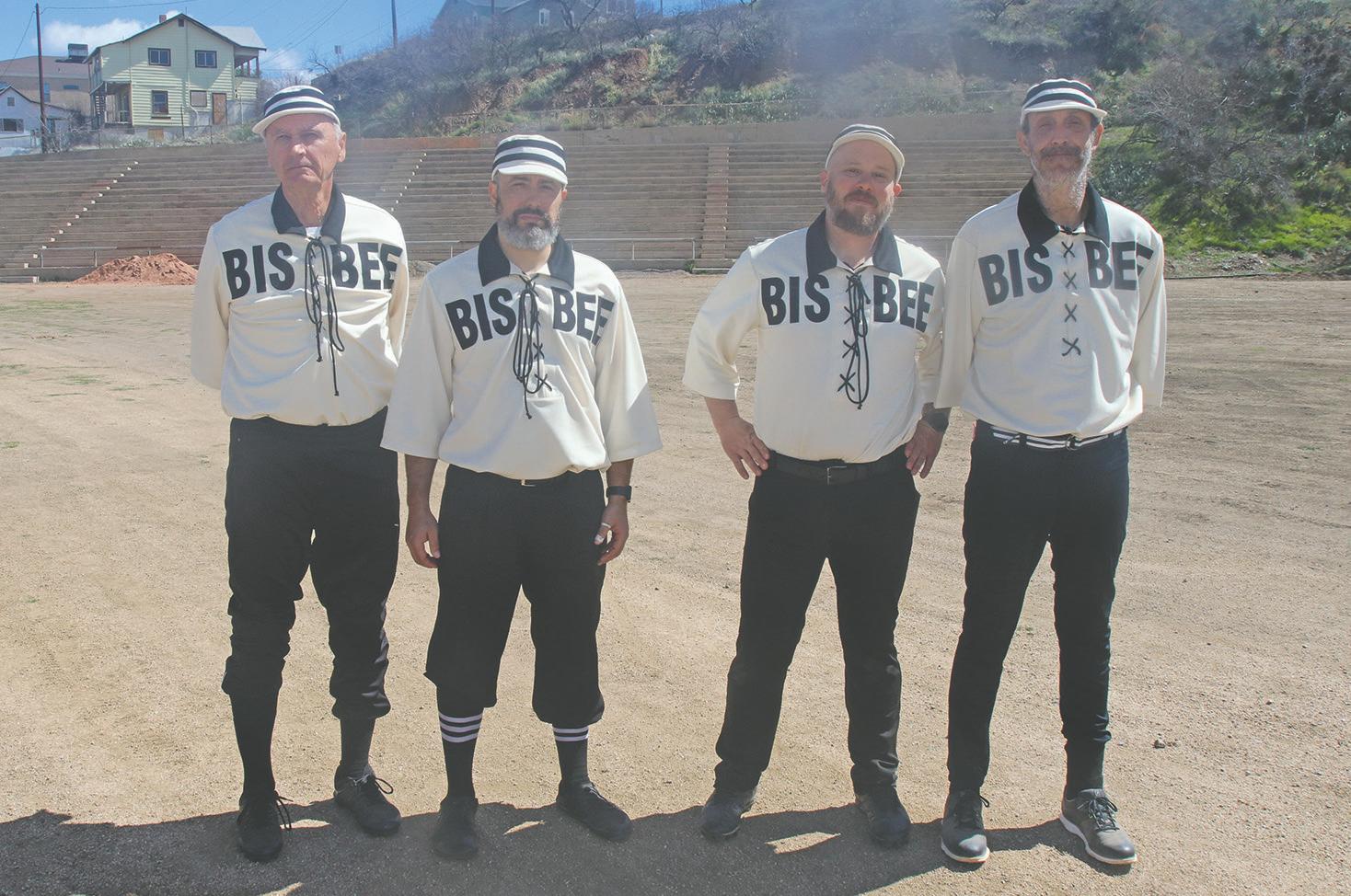


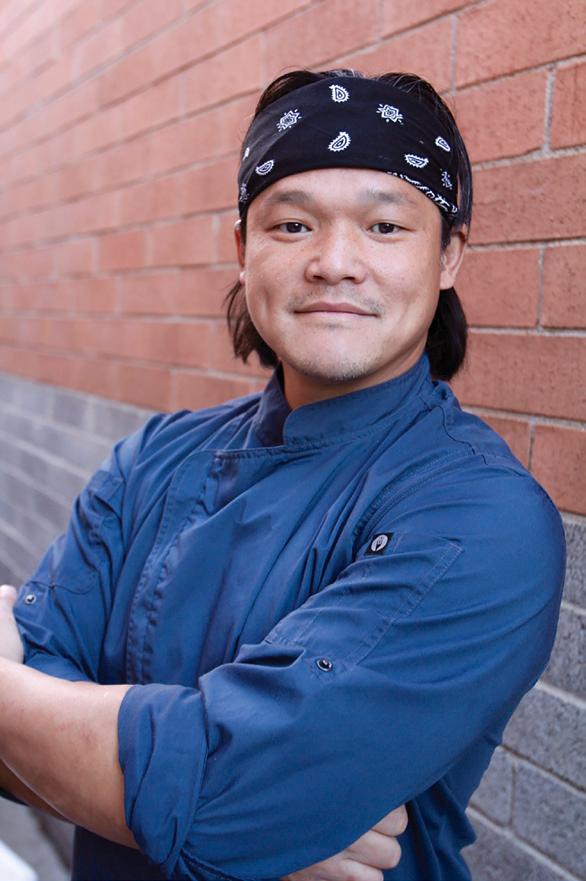








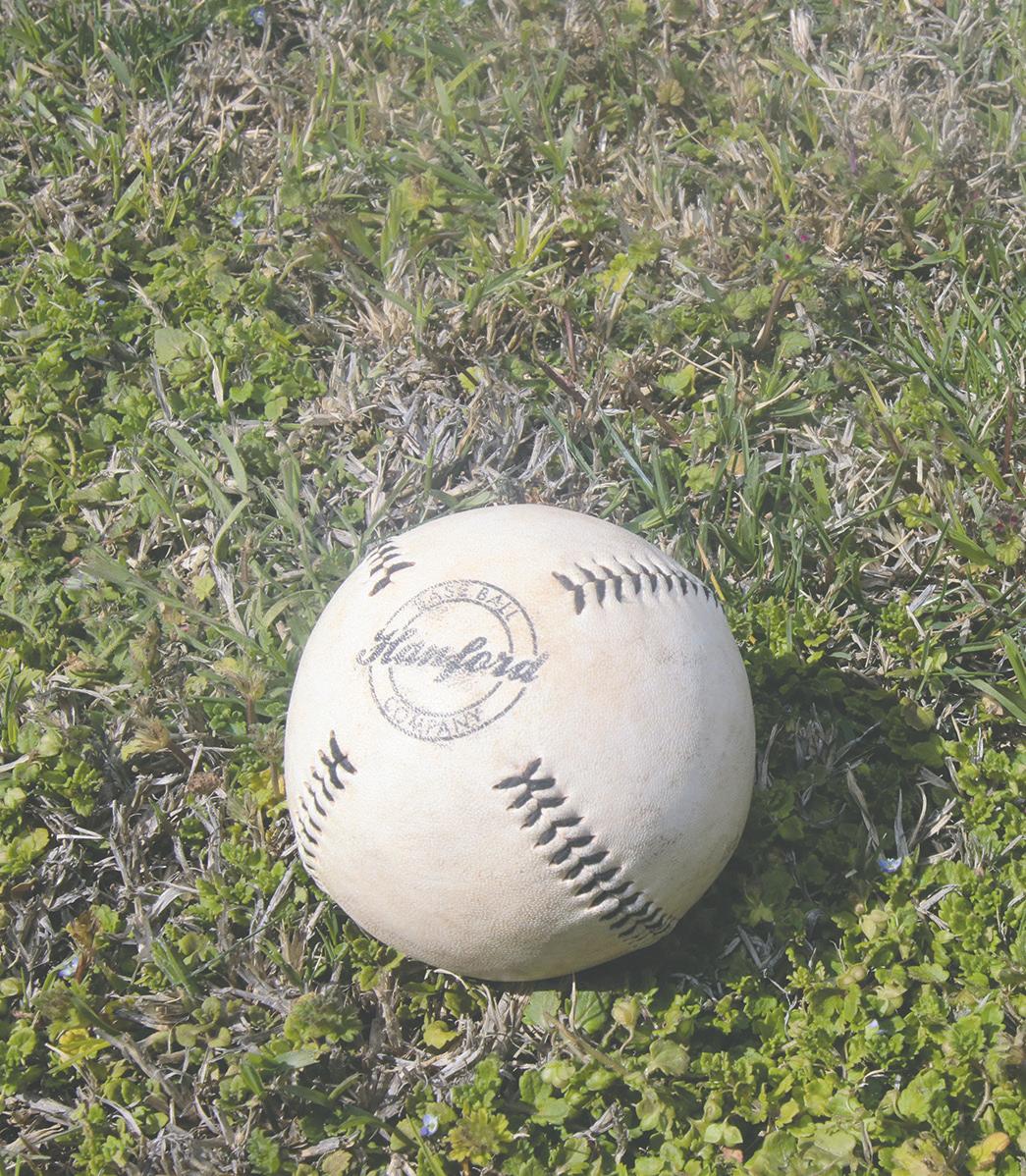
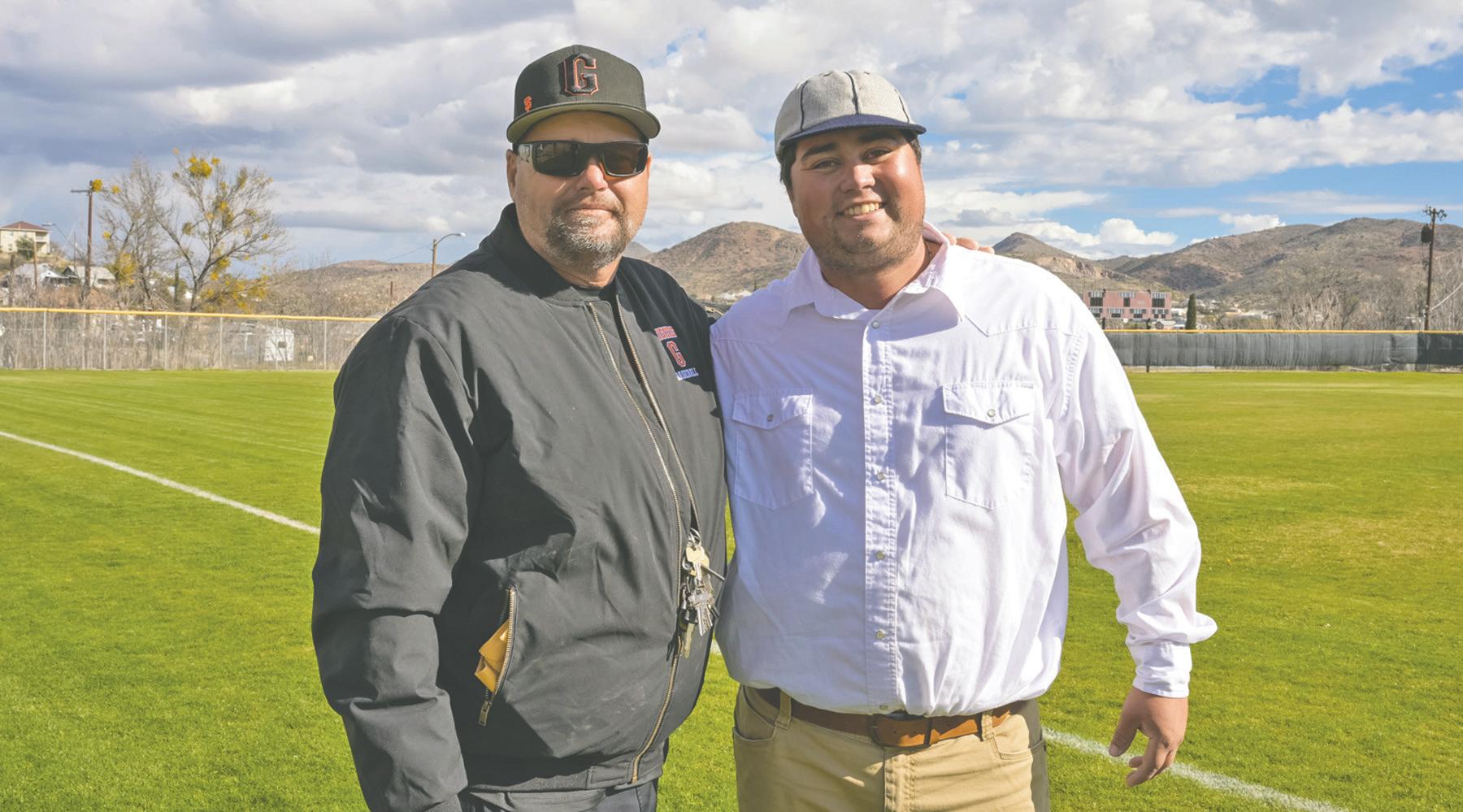
, Continued from page 10
Founded in 2009, the Black Sox took their name from the 1918 World Series scandal. The Chicago White Sox players who were banned from the major leagues (including Shoeless Joe) played out of Bisbee.
The Arizona Vintage Base Ball League plays a festivalstyle schedule. Each month, a different team hosts the tournament. When the Yuma team disbanded, no one was left to host the March tournament.
“I said, bring it on over,“ says Jonathan. “Give the players a chance to play on a nice field.”
Jonathan is head groundskeeper for Globe schools, statistician for the Globe Tigers baseball team and unofficial historian of Central Field, located at 529 Mayss Street in Globe.
“I found mention of it in an 1891 newspaper article,” he says. ”A 4th of July game was played at this site.”
The first grandstand built on the site was south-facing, common in the day. The field was home to the Globe Bears, a class D minor league team from 1929-1931. The Globe Bears merged with the Miami Miners to become the Globe-Miami Browns; they played in the Arizona–Texas League from 1947 to 1950 and the Arizona–Mexico League in 1955. Minor league action ended there, but the field played on. It was used for baseball and football, wrestling and rodeos.
“It was pretty much everything for the town,” says Jonathan. “Then in the 1980s, Coach Eldon Dallas turned the field around and put it in its current state.”
Today, it is an award-winning field, impeccably groomed with all-natural grass. For nine months, it was winter rye; for three months, it was standard Bermuda. Five years ago, it was a mess with trees and weeds.
“It takes a lot of time and love, and money to maintain a ball field,” says Wes Sukosky, head coach of the Globe Tigers baseball team, who first started developing Central Field in 2019, after years of managing fields for Pinal Little League.
Today that hard work has paid off. The games end with a brief ceremony. The teams line up and shake hands. Then they thank the arbitrators for a fair game, their opponents for the challenge and the fans who came out to cheer them on. They thank the Globe Tigers baseball team for putting on the game.
For Ken “Castle Rock” of Bisbee, people just need to experience vintage base ball to see what it’s like. “Once they try it,” he says, “they’ll fall in love with it.” u
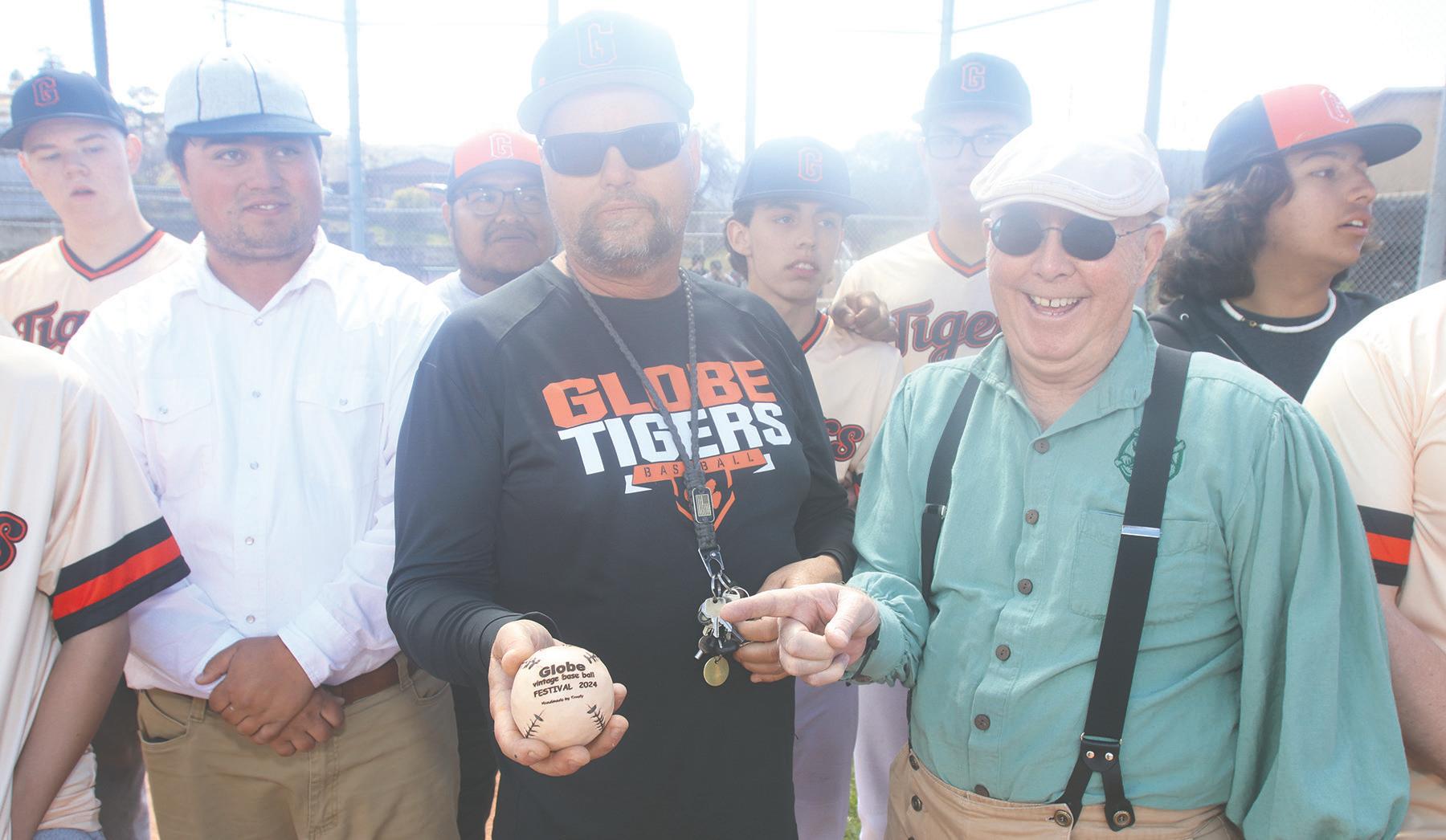



Hours: Mon-Sat 8am-6pm; Sun 9am-4pm










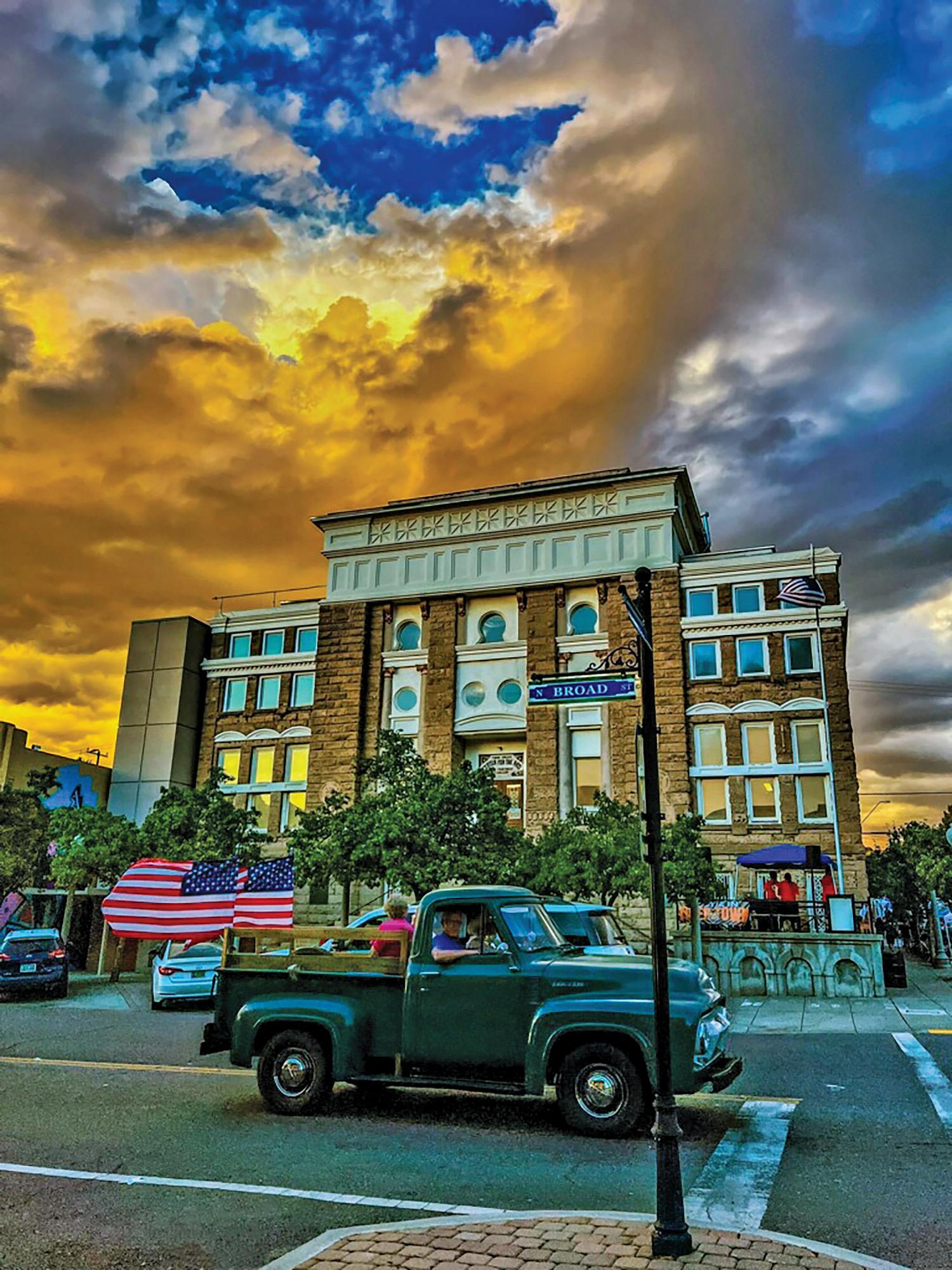

6th Annual Globe Cemetery Tour
April 20th | 6-8pm
Tickets: $25 Hosted by the Globe Downtown Association and the Copper Communities Players The old Globe Cemetery is rich in stories of those who settled here and made their mark on the town and the state’s history. Each year, GDA and our community players bring these stories to life, offering an engaging look at Globe’s glorious past. For tickets see us on FB or call 480-345-7477.
Cruise Broad Street, enjoy special events, live music, food trucks, shopping and more!

The Cobre Valley Institute of Technology is expanding its offerings in the healthcare fields this fall by adding mental and social health training, in an effort to help address growing worker shortages in the field.
Citing a need for mental health professionals across the country, and specifically in Arizona, CVIT Central Campus Counselor Aja DeZeeuw says the Mental and Social Health Technician program comes in response to what is widely considered to be an ongoing crisis of care.
The program will be part of CVIT’s Health Technology offerings and students who participate will gain several benefits, including the groundwork for a certificate in other fields, such as medical and nurse technology. It will also provide a CPR certificate to help satisfy high school graduation requirements.
The program holds particular personal interest for DeZeeuw, as she has devoted her professional life to mental health care and counseling and wants to help destigmatize it for students who may need help but hesitate to seek it out.
“One thing that we are seeing across the country is that students are more comfortable and more willing to ask for help,” DeZeeuw says. “That stigma is starting to break down because they’re starting to realize that they’re not alone. To me this is a positive thing and, hopefully, this generation is going to try to make changes in the realms of mental health, but also not be afraid to go and seek help if they need it.”
She adds that the classes are as much about helping students in their own lives as well as offering a career path in a much-needed field.
DeZeeuw was brought into CVIT in the wake of the COVID pandemic to help students who were struggling to deal with the fallout from that period. Her role went beyond CVIT and into the classrooms of rural Arizona schools that do not have counseling services available.
Throughout her two years at CVIT, she has seen with her own eyes and heard reports from other school counselors about problems students who seek help encounter, such as long wait times for care, even if they are experiencing a crisis.
“It’s really hard to even get them to admit that they need help and need to talk to somebody, so when you finally convince them it’s important to get them that care,” DeZeeuw says. “I have contacts with a lot of other counselors around the state and all of us, especially those in rural areas, basically say the same thing, that there’s a six week waitlist.”
She adds that by the time they get to that point, students or their parents often just give up.
“It’s taken them so much courage to just say yes, and then at that point, they just feel defeated, and say they don’t even want to bother,” she says.
Organizations such as the American Psychological Association, the Substance Abuse and Mental Health Services Administration (SAMHSA) and the Health Resources and Services Administration (HRSA) have warned of an expanding need for psychological and counseling services, particularly in the wake of the COVID pandemic, warning of an impending crisis due to a shortage of workers in the mental healthcare sector.
According to a September 23, 2023 report in

Psychology Today, approximately 47% of the population of the U.S. live in an area with a shortage of mental health workers and nearly half the population suffers from some sort of mental health issue, ranging from depression and anxiety to substance abuse.
“The shortage of mental health professionals is particularly prominent in rural areas and economically stressed cities,” the report states. “Counties outside of metropolitan areas have one-third the supply of psychiatrists and half the supply of psychologists in urban areas.”
Additionally, many of those citizens have no access to care due to the structure of the healthcare industry and the hesitancy of insurance providers in that sector. The problem has only been exacerbated by COVID, increasing anxiety and substance abuse in the overall population, straining an already stressed healthcare delivery system.
The Department of Labor estimates annual projected growth of the sector in the state of Arizona through 2030 will be 44% for mental health and substance abuse social workers—510 projected job openings annually; 54% for substance abuse and behavioral disorder counselors—1,170 projected; 48% for psychiatric/behavioral health technicians—540 projected, and 25% in the child, family, and school social workers field with 800 projected job openings annually throughout the state.
“The bottom line is this is a huge field with lots of career prospects locally,” DeZeeuw says. “This program is listed on the ‘in-demand’ Gila County CTE list, meaning that it is a program we can offer at least the first year of to students in their 13th year—meaning recent graduates. If any students graduating this year are interested, they can apply and if they’re approved, we can support them in the first year of the program with CVIT funding.”
The course includes a combination of introductory
classes taught by DeZeeuw and classes that already exist in the other health fields.
Students will learn basics of the physiology of the brain, cognitive development, mental and social health illnesses, disorders and conditions, as well as communication skills and problem solving.
The accrediting body is the Arizona Department of Education and the curriculum is approved by the Substance Abuse and Mental Health Services Administration (SAMHSA) as being a research based, evidence based program.
Students who complete the program will also receive a Psychological First Aid certification through the National Child Traumatic Stress Network.
“Our students will end up with psychological first aid, and they’ll take CPR and First Aid along with the nursing assistant and medical assistant students,” DeZeeuw says. “If they get into this, and they decide two-thirds of the way through that it’s not for them, they’ll actually have the medical certificate background so they could pivot into one of the medical fields.”
The Mental and Social Health Technician program will begin as a three-semester program, but has the potential to expand should it be a successful as DeZeeuw thinks it will be.
“Even if somebody isn’t necessarily interested in pursuing this as a career, there’s a lot of great information that can help a student either themselves or with somebody they love,” she says. “We’re going to talk about substance abuse, maladaptive coping skills, those types of things that really can benefit anybody in life. It’s a great start, if somebody’s interested in pursuing this as a major, but it’s also just going to be good information.”
Applications for all CVIT programs for the 2024-25 school year, including this one, are now open. Interested students can contact DeZeeuw at AdeZeeuw@cvit81.org, or by phone at 480-204-0325 for more information.












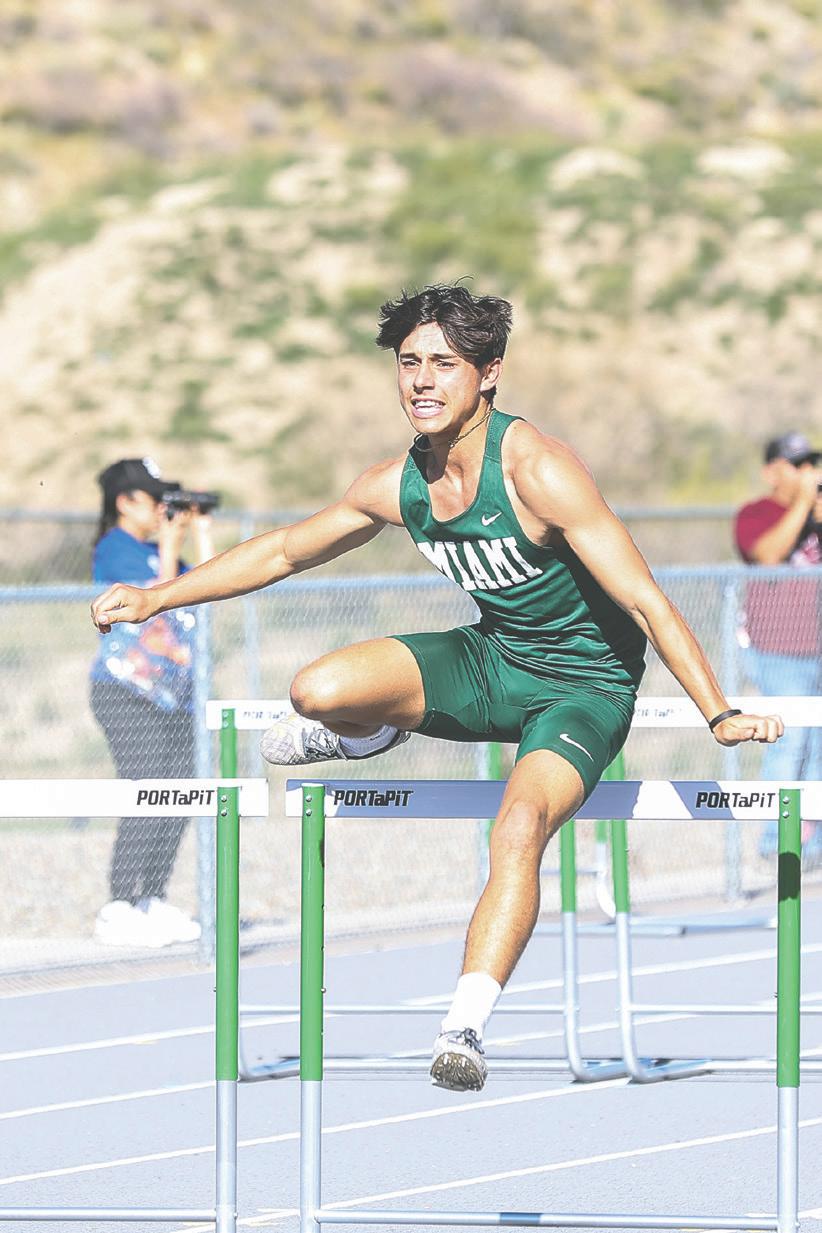
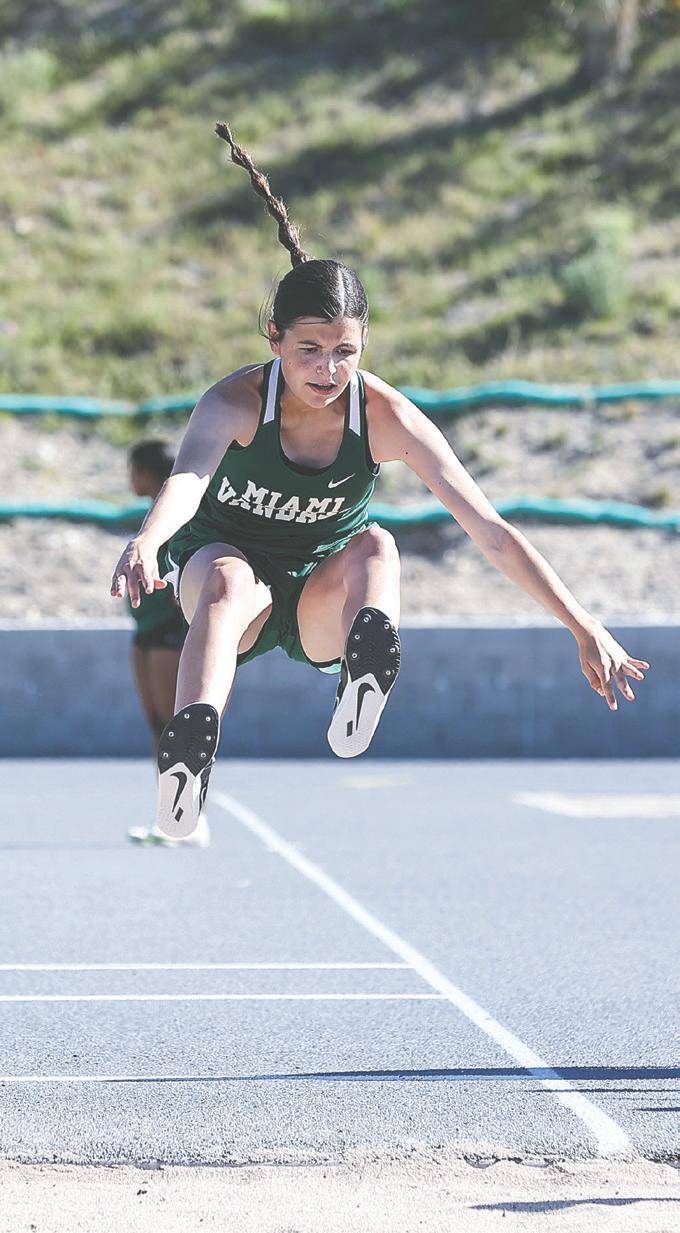



“I’ve missed more than 9,000 shots in my career. I’ve lost almost 300 games. Twenty-six times I’ve been trusted to take the game-winning shot and missed. I’ve failed over and over and over again in my life. And that is why I succeed.”
—Michael Jordan




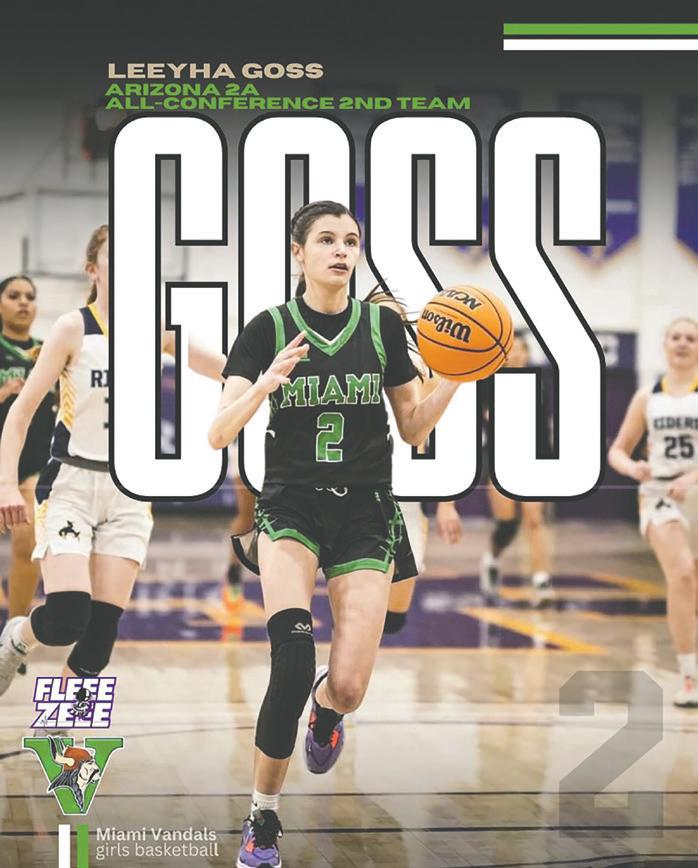
 By David Abbott
By David Abbott
Miami High School’s Lady Vandals varsity basketball team came within one game of the pinnacle of success when they fell to the Phoenix Country Day School Eagles in the state championship game on February 24 at Arizona Veterans Memorial Coliseum in Phoenix.
In the end, the Vandals were runners up in the state, playing in the championship

game for the third time in school history and the first time since the 1986-87 season.
The final game was a disappointing 6030 loss to Phoenix Country Day, a private school in Paradise Valley, but the team came away with multiple awards and plenty of hope after a dominant regular season.
“It means a tremendous amount because it puts our community on the map,” says Miami Athletic Director Paul Fine. “When it comes to going up against some of these urban schools, I think it just proves to our kids that if you work hard and put in the hours and put everything into it, you’re just as capable as any other students around the state. It’s just a matter of believing in it, wanting it and putting your mind to it.”
“When it comes to going up against some of these urban schools, I think it just proves to our kids that if you work hard and put in the hours and put everything into it, you’re just as capable as any other students around the state. It’s just a matter of believing in it, wanting it and putting your mind to it.”
Third-year coach Crystal Pietila has built a powerhouse program and was named Arizona 2A Co-Coach of the Year as her team soared to the top, at times making it look far too easy.
The Lady Vandals improved four games from the 20-9 record in the 2022-23 regular season to a 25-4 mark in 2023-24, including Eastern Arizona College, Hawaii and regional tournament play.
The team entered the season ranked eighth after ranking sixth the previous year. They will go into the 2024-25 season ranked number two and a majority of the team’s core will return.







page 16
The Lady Vandals gave a hint of what was to come in the previous season, roaring out of the gate with an 83-8 drubbing of rival Hayden Lobos. Although there were a few tight games in 202223, the girls established dominance in several lopsided victories, including an 80-30 win over Globe.
In a pair of wins over San Tan Charter, they won by a combined total of 151-18, including a 60-2 demolition in the 2A Valley Tournament in February 2023. In all they won 11 games by at least 30 points, including tournament play, and held opponents to single-digits an astounding three times.
That trend continued in the 202324 school year, when hapless Hayden lost the first game of the season to the Vandals by a 79-9 mark.
By the end of the season, the Lady Vandals were victorious in 15 games decided by at least 30 points, including a 106-19 annihilation of rival Tigers in the Globe High School gym followed by a 102-23 victory in Miami on January 16, the evening of the dedication of the refurbished gym to the Vargas coaching family.
While the team’s losses were much closer in 2023-24, the Lady Vandals lost two tournament games by 30, including the semi-finals of both the I MUA Invitational in Maui on December 1 and the State Tournament in February.
According to Coach Pietila, two years of tough competition and playing 31 games last June contributed to the team’s chemistry and how the girls came together as a team.
“The opportunity to play some of the toughest competition in the country in the Hawaii tournament [in February] made us realize the intensity it takes to compete at a high level,” Pietila says. “Winning the Regional Championship two of the past three seasons was important as well.”
Pietila added that the high points of the season included Miami’s ascending rankings in the 2A Region and beating traditionally strong programs, such as


Round Valley and Pima, but the cherry on top was beating the team that knocked them out of the playoffs last year, Valley Sanders High School from northeastern Arizona, by 32 points.
In addition to the work the girls have done to gel as a team, Pietila credits stability in the administration and athletic department at Miami that has helped foster a sense of family, and long-term friendships have brought a sense of community to the organization.
Her husband, Principal Shawn Pietila was Miami’s Athletic Director prior to taking the leadership position and the subsequent promotion of Fine to the AD’s office. All three worked together in San Carlos prior to accepting positions in Miami.
“Shawn being free of AD duties it has allowed him to be closer to the team and I am so grateful for his all-around support. We are blessed to have him as our number one fan,” Pietila says. “Paul Fine has been a supporter of the program even before his time in Miami began so it has been a smooth transition. I am also grateful for his hard work and commitment.”
With only two of the girls graduating, and plenty of talent in the pipeline for next year’s team, Fine believes the Lady Vandals will have another strong outing in 2024-25.
He also says he does not discount the historical value of past champions and the long history of the Vargas family on what has been happening with the team.
“When you go into the gym, and you see the years on those banners, things like that will probably get your competitive juices going a little bit,” Fine says. “The intangibles can only contribute because seasons are long and I think stuff like that helps with the day-to-day grind and with creating a team atmosphere.”
He does not believe this team will rest on its laurels anytime soon, as it has unfinished business ahead.
“The team we went against in the championship game returned everybody from last year and they’ll be coming back,” Fine says. “So it’s good to have most of the team returning.”


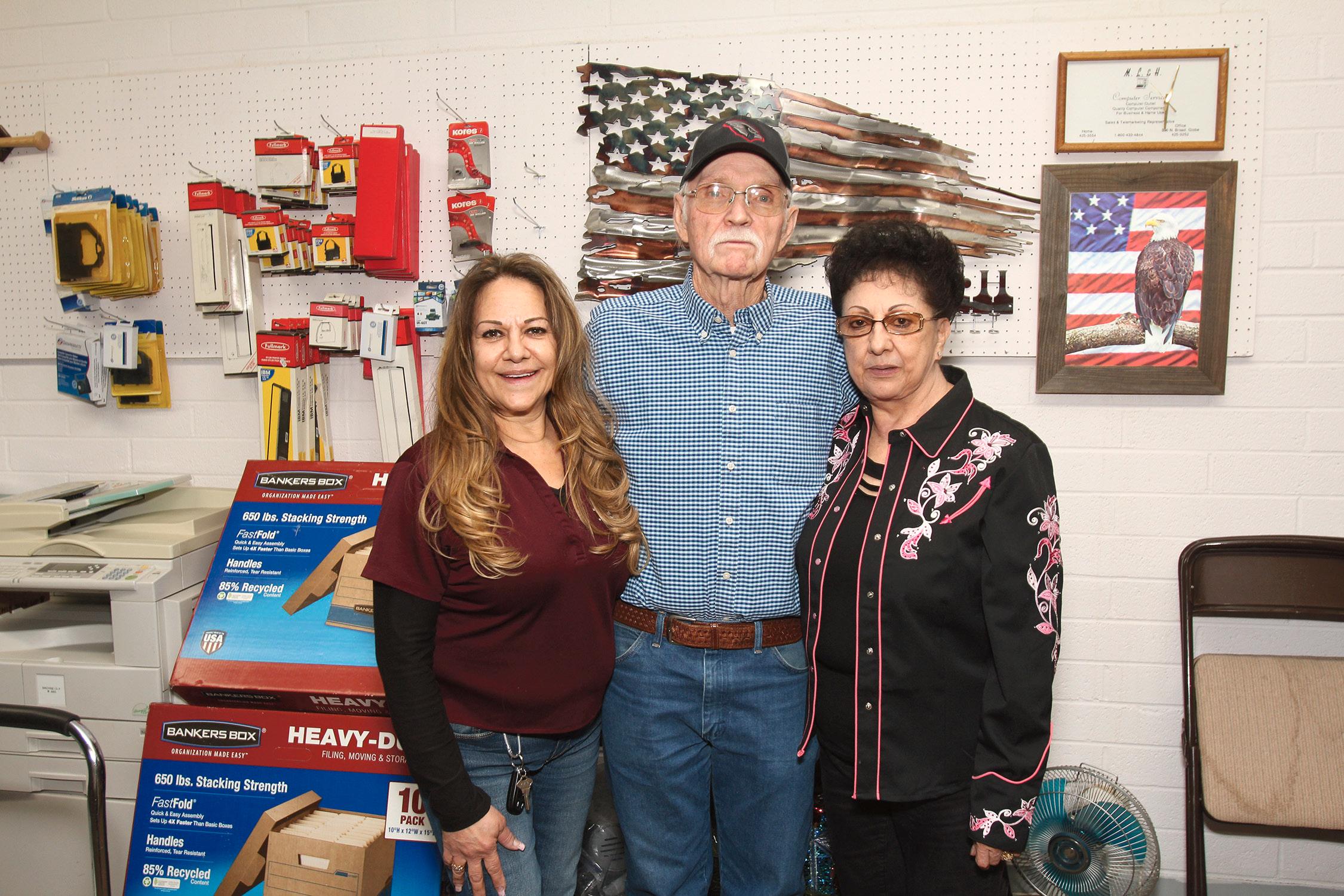



The Town of Miami and the Capital Readiness Program
hosted Industry Day
April 11th in Downtown Miami
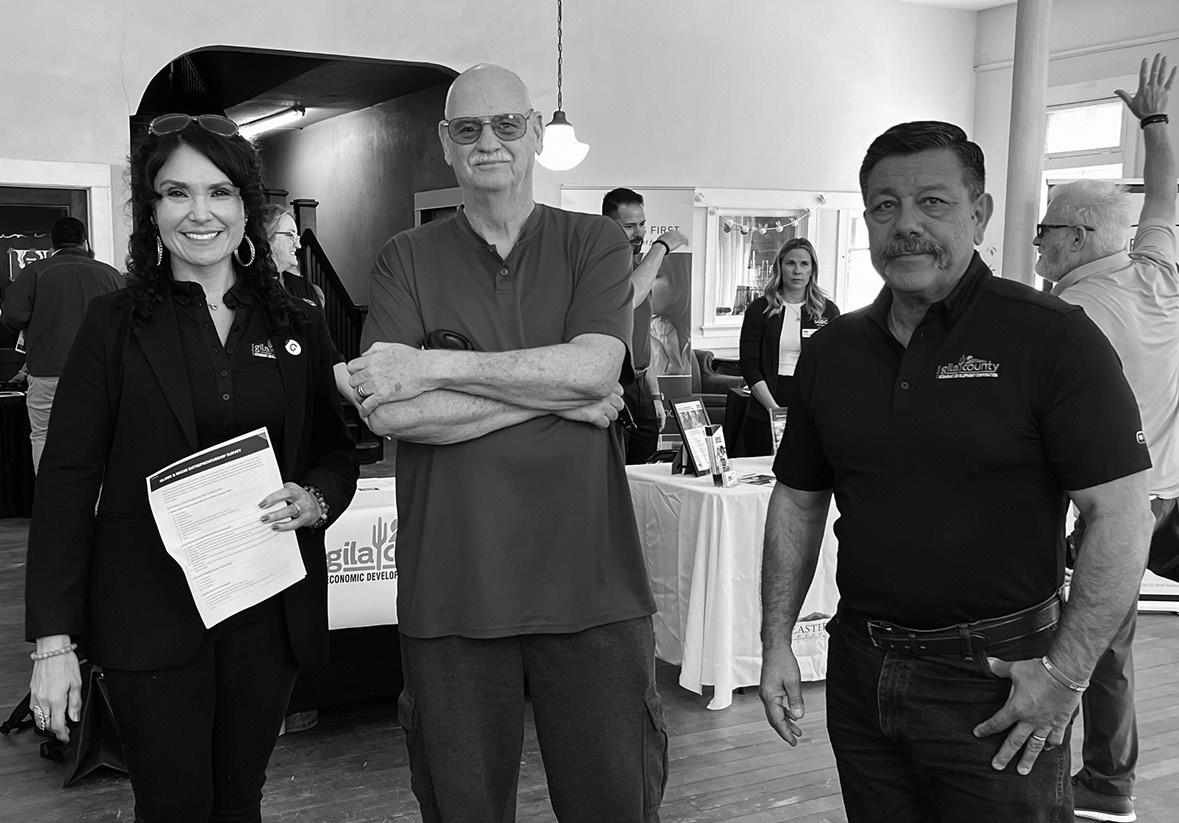




March 27th at Besh Ba Gowah • Globe, AZ
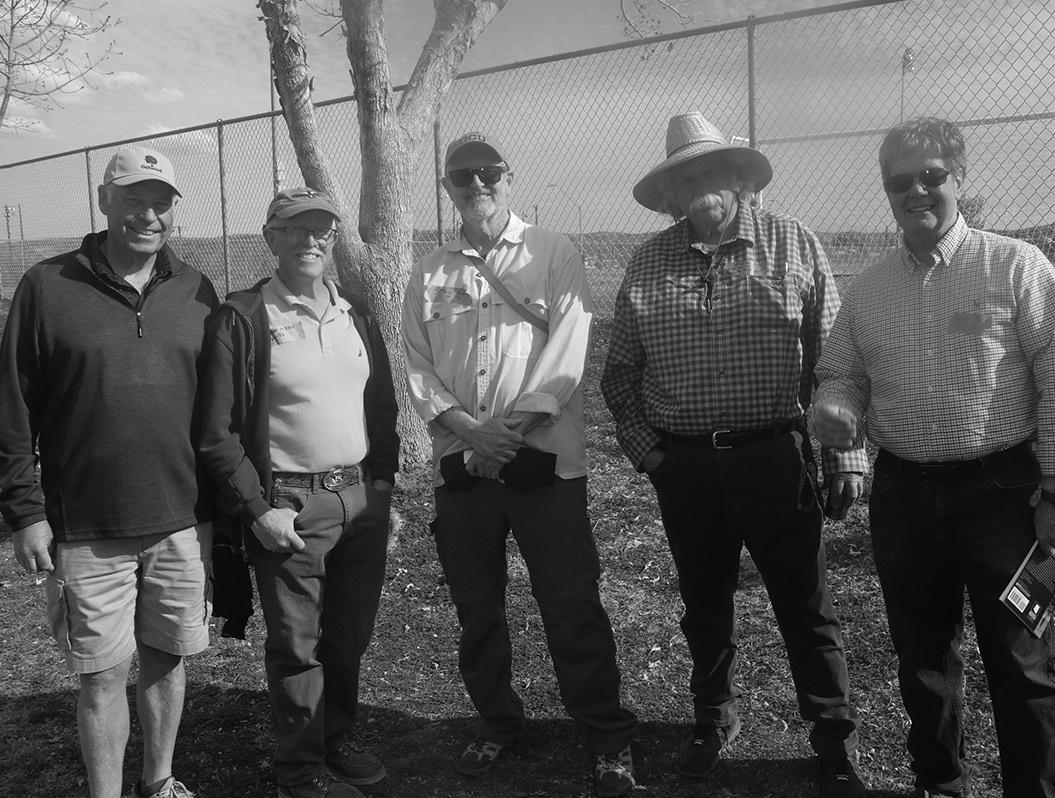










March 30th, 10 am - 2 pm • Historic Downtown Globe
Hosted by the Globe Downtown Association and featuring fun “frame-able” portraits as part of the Globe-Miami Chamber’s Poppy Fest promotion, the parade attracted a big turnout this year. Strolling the historic downtown, and joined by the Easter Bunny and Carrot tops, attendees showed off their Easter bonnets and fine attire.



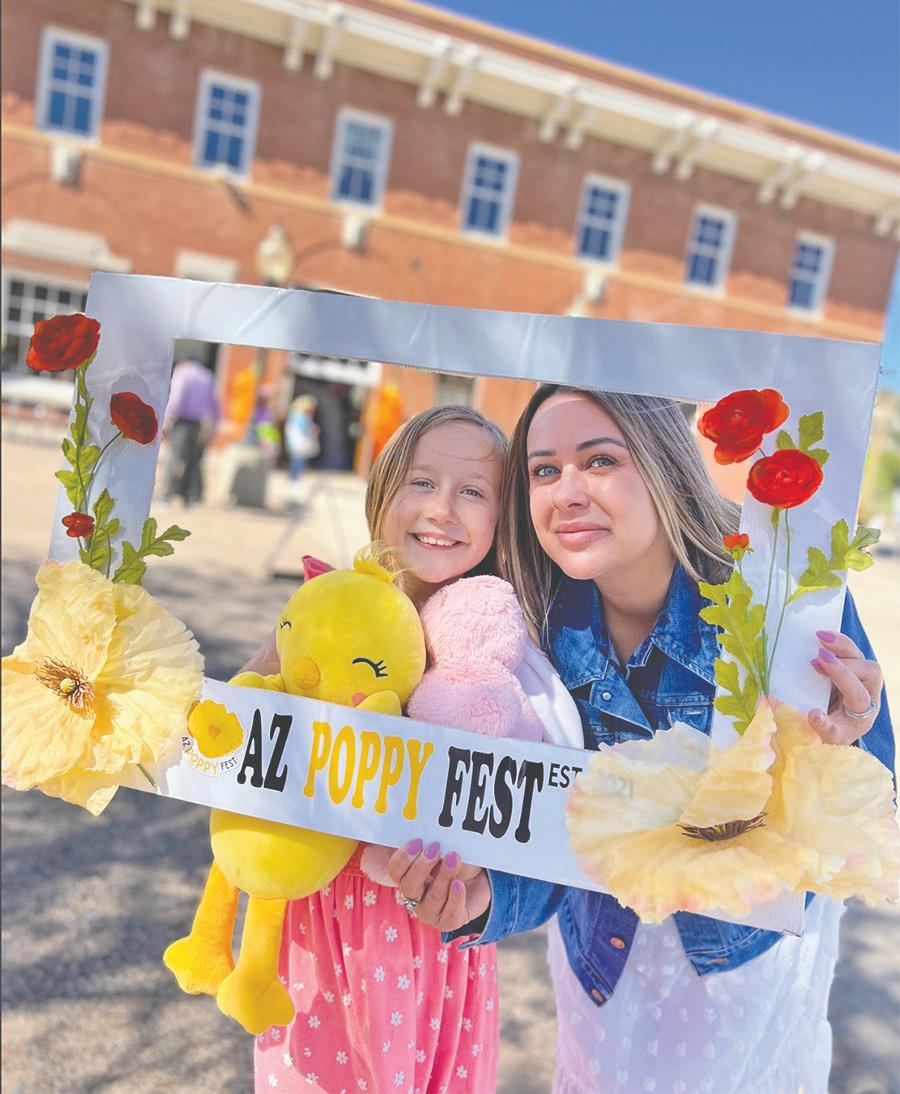



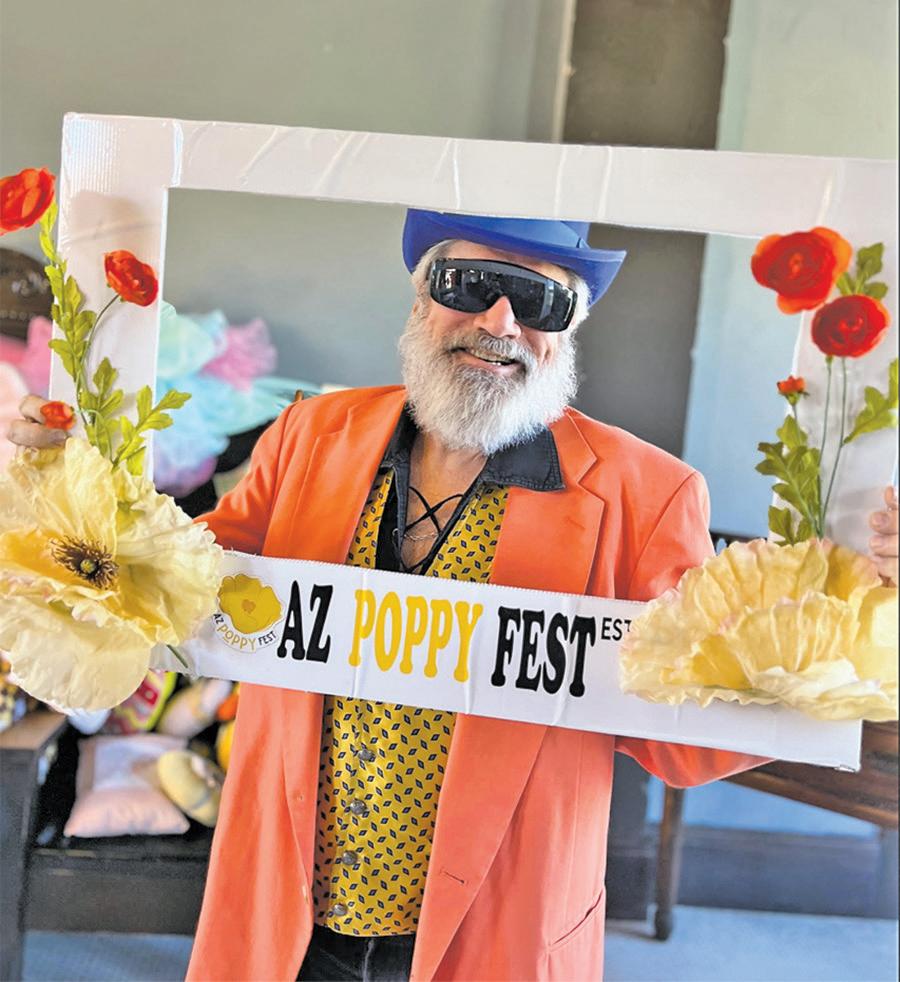

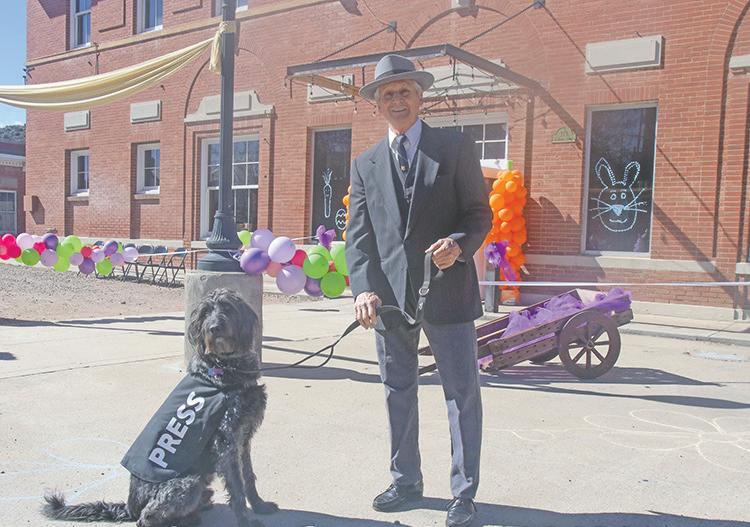



















A contest for young artists is bringing new color to the Copper Corridor in the form of mining-themed murals.
Artists under age 30 were invited to submit designs, and the winning murals will appear on walls in Globe, Miami, Superior, Kearny, Hayden, and Winkelman.
The artists were allowed to use any medium, but the designs had to include some reference to mining - past, present, or future. Twenty-nine entries were received, and community leaders in the Copper Corridor chose the winners by selecting pieces they want to see as murals in their towns.
In addition to seeing their designs featured in their communities, the selected artists received $500 in monetary awards. Experienced muralists will work with the young artists to bring the murals to life.
Abriana Torres, 16, lives in the Hayden-Winkelman area. Her mural, “You Can Grow Your Dreams Anywhere,” was

selected for a wall in her hometown, and her award check was presented at a Winkelman Town Council meeting. Erica Raymond of Globe is the muralist tapped to work with Abriana.
Eli Webb, 29, hails from Miami. His piece, “Miners at the Gateway,” was selected by the Town of Miami and will be painted on the Arizona Farm Bureau wall along Highway 60. Jason Begay, an experienced muralist from Phoenix, will work with Eli in the coming weeks to paint the mural.
Miela Verdugo, 11, lives in Miami. She designed a mural selected by Kearny for a wall fronting Highway 177. Miela will be honored among her peers at Lee Kornegay Junior High with presentation of her award check.
Two additional artists, Allie Stevens, 15, of Peridot and Matthew Bolinger, 15, of Globe, created designs selected for transformation into poster-sized coloring pages, perfect for community events. They will each receive an award of $250.
The local arts nonprofit Love Where You Live sponsored the contest, which was supported by grant funding from the Arizona Rural Arts Foundation, with additional funding from the Arizona Community Foundation.
LWYL chose a mining theme because “mining is an integral part of our heritage and current economic vitality,” said Thea Wilshire, one of the organization’s co-founders.
“We believe there’s power in uniting the towns of the Copper Corridor and promoting the region as a whole. There’s a saying that a rising tide lifts all boats. We think this is true and represents a previously under-tapped promotional idea for us.”
“We want to empower the community champions who will turn our livable spaces into lovable places,” says Regina Ortega, co-founder of LWYL.
“Our region has creative folks who are, or will be, the


co-makers of our town’s future. We want to identify them now and support them as they grow into their talents. They are our future,” Ortega said.
Placemaking is the process of creating spaces where people want to live, work, learn, and visit, and placekeeping is the celebration and enhancement of what makes a place unique. LWYL is committed to both.
To support the work of LWYL, contact them at 808-3730032 or email livable2lovable@gmail.com u










BERNARD MICHAEL PETRUS, March 8, 1934 – March 30, 2024, age 90, of Wheatfields, passed away at his home. (LM)
MARIA ELIZA RAMIREZ, June 2, 1942 –March 30, 2024, age 81, passed away. (BM)
JIMMY MATTHEWS JR., September 11, 1955 – March 28, 2024, age 68, passed away at CVRMC. (LM)
WILLIAM GOSEYUN, August 7, 1988 –March 27, 2024, age 35, of Peridot, passed away at Banner University Medical Center in Tucson. (LM)
HAROLD HOFFMAN, May 18, 1955 – March 26, 2024, age 68, of Peridot, passed away at Chandler Regional Medical Center. (LM)
HILDA R. CARDENAS, April 21, 1963
– March 26, 2024, age 59, of Superior, passed away. Hilda was a site manager for Superior’s Head Start program. (BM)
DAKOTA BLAKE MARTIN, April 14, 1994
– March 26, 2024, age 29, of Mammoth, passed away. (LM)
NATHANIEL LEE MILLER, May 6, 1982 –March 25, 2024, age 41, of Phoenix, passed away at Chandler Regional Medical Center. (LM)
JOYLENE DALE NASH, September 12, 1971 – March 22, 2024, age 52, of Phoenix, passed away at Honor Health Medical Center in Phoenix. She was originally from San Carlos. (LM)


TIMALEE DAWN NELSON, June 29, 1985 –March 22, 2024, age 38, of Bylas, passed away at San Carlos Health Care in Peridot. (LM)
MANUEL E. MEDINA, December 3, 1928 –March 20, 2024, age 95, passed away. (BM)
JOHNNIE EDWARD BRANDT, October 5, 1942
– March 20, 2024, age 81, of Globe, passed away in Chandler. (LM)
RAYMOND EDWARD SHANK, May 18, 1932 –March 18, 2024, age 91, of Globe, passed away at his home. He served in the Air Force before joining APS, where he retired in 1987. He was originally from Brownsville, Texas. (LM)
MARIA REFUGIO NORIEGA, April 28, 1933
– March 17, 2024, age 90, of Miami, passed away at her home. She was originally from Douglas. (LM)
JOAQUINA DELGADO, March 8, 1974 – March 17, 2024, age 50, passed away at Banner University. She was originally from Tucson and was a certified phlebotomist. (BM)
JOE V. BUSTAMENTE, April 17, 1929 – March 16, 2024, age 94, of Winkelman, passed away. Joe worked for ASARCO for over 40 years, as a skimmer and crane man in the Converter Department. (BM)
GALE MYERS, May 9, 1954 – March 13, 2024, age 69, passed away. Gale was a butcher before working full-time at BHP Pinto Valley, where he retired as the SX plant foreman after 25 years. (BM)
JAIME CRUZ MONTIJO, April 3, 1980 –March 13, 2024, age 43, passed away. (BM)
DELORES PIKE, October 13, 1969 – March 11, 2024, age 54, of Bylas, passed away at her home. (LM)
JILLIYN ALEXANDRA MARIN, February 25, 2005 – March 11, 2024, age 29, passed away. Jilliyn was born in Globe and graduated from Miami High School in 2023 with high honors. She had obtained certificates for medical assistant and phlebotomist and was attending UofA, along with the love of her life, Eric Troglia. She had dreamed of becoming a geneticist and marrying Eric. (LM)
PEGGY COVEY, June 30, 1932 – March 10, 2024, age 91, passed away. (BM)
ELIZABETH CABALLERO YANEZ November 10, 1935 – March 10, 2024, age 88, of Superior, passed away at her home. Elizabeth was active in the Catholic community and was an ardent quilter. (BM)
EDNAI JOHN UPSHAW, February 11, 2004 – March 8, 2024, age 20, of Peridot, passed away. (LM)
CARL LEROY PIERSON, March 10, 1957 –March 6, 2024, age 66, of Globe, passed away at Haven Health Nursing Home. Carl participated in Special Olympics and in church activities at the Church of Jesus Christ of Latter-Day Saints. (LM)



MARY EVELYN CHAPMAN, July 16, 1944 – March 5, 2024, age 79, of Globe, passed away at CVRMC. Evelyn worked as a clerk for Magma Copper Co. (LM)
GLENDON GOULD, January 10, 1952 –March 7, 2024, age 72, of Globe, passed away at his home. He worked in the Tank House for both BHP and Capstone. (LM)
REYNOLD JAMES NATSYN, April 26, 1968 – March 4, 2024, age 39, of San Carlos, passed away. Randy was able to fix anything. He was also a craftsman of Apache bead necklaces, moccasins and buckskin outfits. (LM)
CRISTAL ALICIA PONCE-ESTRELLA, January 31, 1984 – March 4, 2024, age 40, passed away in Globe. (LM)
MICHAEL EUGENE HILL, January 6, 1954 – March 3, 2024, age 70, passed away in Globe after a short battle with cancer. Mike served 9 years in the US Army before becoming a semi-driver for over 30 years. He was originally from Ohio. (LM)
RHYNE “TOB” DOSELA, October 9, 1954 – March 1, 2024, age 69, of San Carlos, passed away in Miami. Rhyne served as a San Carlos councilman, Tribal judge and defense attorney. (LM)
(LM= Lamont Mortuary. BM=Bulman Miles Funeral Home)

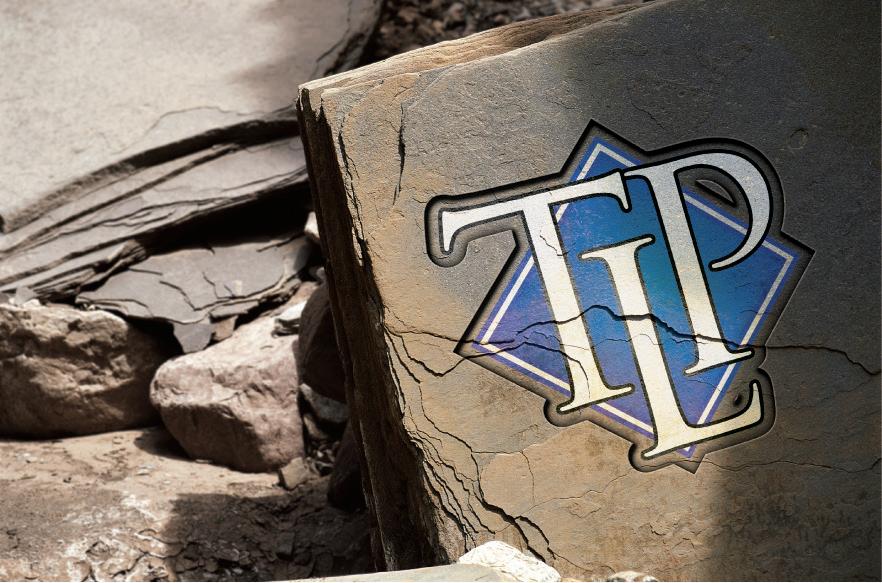


Continued from page 1
Improving recreational opportunities is a central focus for Rivera, along with his efforts to become the face of local governance to the community.
A native of Puerto Rico, Rivera, age 58, has a bachelor’s degree in accounting and is working on a second degree in forensic accounting.
He moved to the Globe-Miami area on July 4, 2002 to be closer to his thenwife’s family. But in 2007, his life changed dramatically during the global subprime financial collapse. Like millions of other Americans, Rivera lost his house and eventually his wife, who returned to Puerto Rico, leaving him on his own in Globe.
“I lost everything in seven days and debated staying in the region. I was getting pressure from my family to go back,” Rivera says. “I talked to God and asked what is the avenue I need to take? I see that this is the avenue.”
He was hired in Hayden to work as finance director and from there moved on to the finance department for the San Carlos Apache Tribe. Working directly with Chairman Terry Rambler, he spent nearly eight years establishing his credentials as a finance manager for the Tribe’s administration.
When he saw the opening to work for the Town of Miami, he jumped at the opportunity.
He began his stint as town manager in July 2022, replacing former manager Micah Gaudet, who served from January 2021 through June 2022 and nearly two years after the abrupt departure of Joe Heatherly in September 2020.
From the outset, Rivera was dealing with the aftermath of the 2021 Telegraph fire and subsequent monsoon flooding. In the early morning hours of August 2023, disaster in the form of fire struck again when a blaze took out several buildings on Oak Street. It was the second such disaster since 2019, when fire destroyed five buildings on Sullivan Street in the heart of downtown Miami.
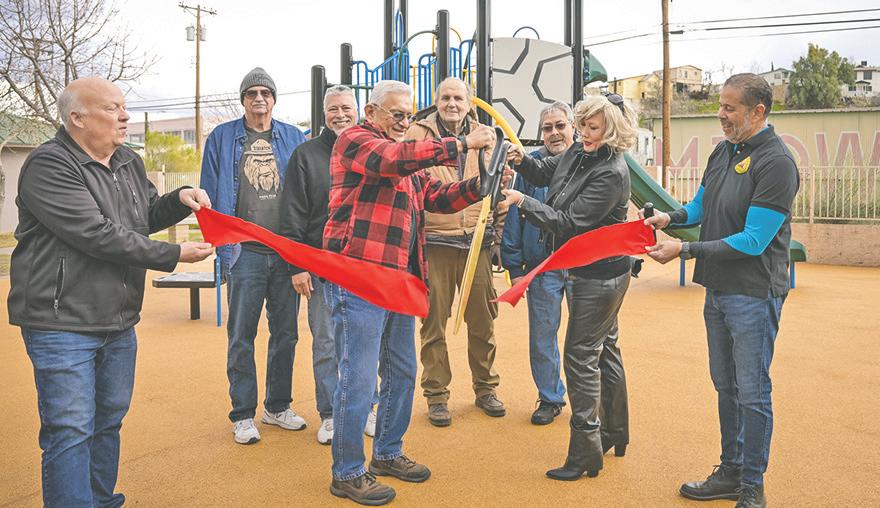
But Rivera was prepared to deal with the unexpected, as he brought a wealth of experience as a volunteer for Team Rubicon, an international non-government organization (NGO) specializing in disaster response that was founded in 2010 in response to an earthquake in Tahiti.
“I worked for FEMA, importantly, and was part of the Red Cross rescue team in Gila County, so my area is not only finance, taxes and consulting, but I have experience with disasters,” Rivera says. “I put all those elements, those hats, in front of the committee that hired me.”
While the town faces many challenges, Rivera is working to bring in external funding to begin the laborious process of creating a town that is economically stable and that all residents can be proud of.

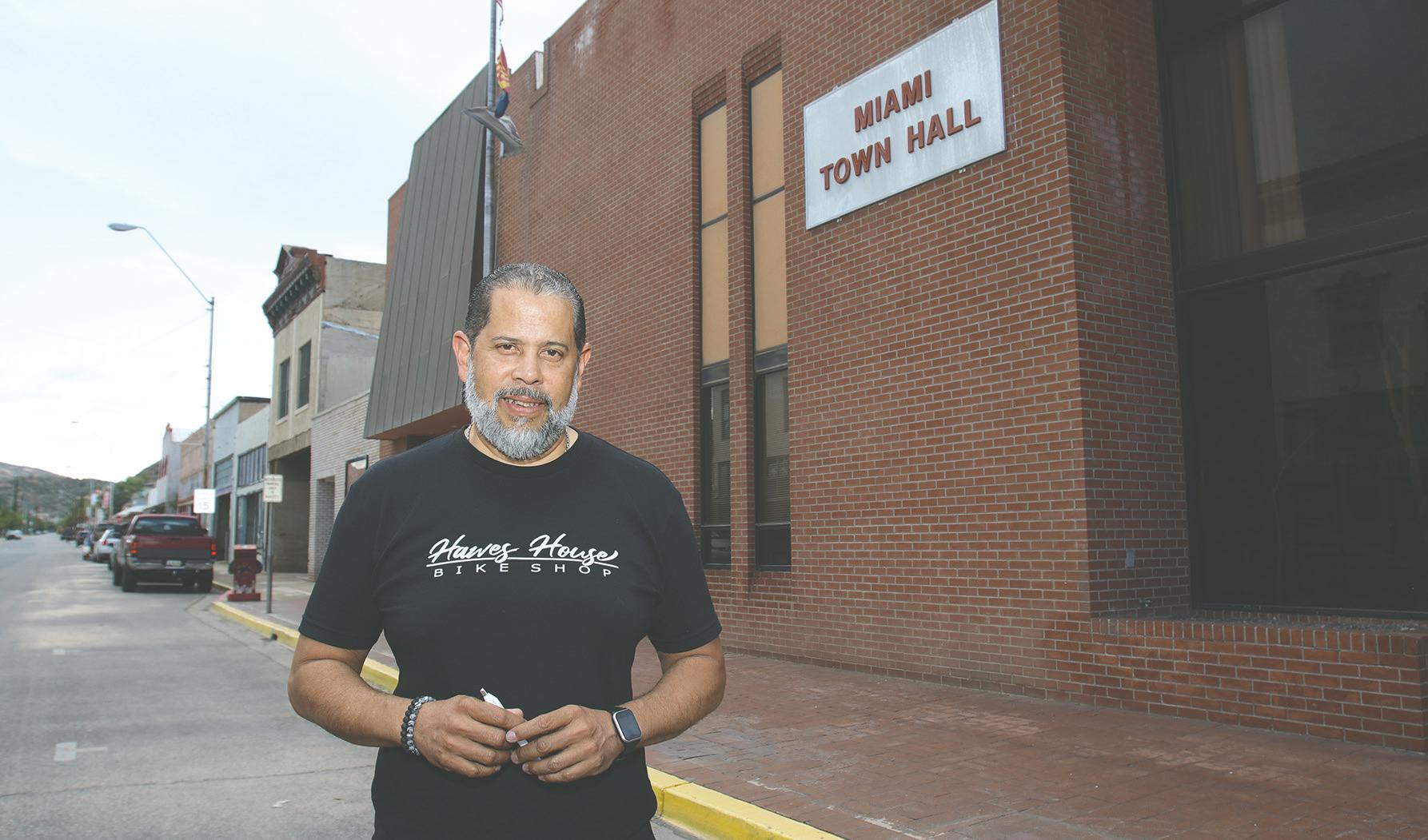















Continued from page 22
In addition to the pool rehab and Veterans Park, work will soon begin on Miami’s staircase project that is similar to Globe’s Stairizona Trail. Rivera also hopes to add many more recreational facilities, such as a disc golf course, a skate park and volleyball and basketball courts for public use.
He hopes to do that by acquiring state and federal grants as well as funds from partnerships with local mining interests.
“We have the trust of all the stakeholders in the region: USDA, ASU, the Army Corps of Engineers, FEMA and the governor’s office, you name it,” Rivera says. “We are creating all those elements to change the quality of life in Miami and to have a positive outcome, especially for local families that don’t have a lot of money to spend.”
Despite the positive direction Rivera and the current council are taking, last November an effort to oust him and remove Jose “Angel” Medina from the mayor’s platform was initiated by Councilmember Mike Black.
Black, who has served with Medina on and off since 2006, questioned Rivera’s personnel decisions and spending priorities in an effort to sow doubt about his ability to lead.
“I have some issues with our town manager and exactly who runs the town,” Black stated.
He further questioned a decision to place former police chief Keith Thompson on administrative leave in October 2022, adding that he does not think Council is wellenough informed on administrative actions or finances.
The meeting, as well as subsequent meetings in January through March, led to policy changes regarding Council’s ability to remove a mayor or vice mayor. But it also exposed long-running friction between Medina and Black that spilled out in public, with Black accusing Medina of violating Council’s code of conduct and Medina telling Black he was tired of being “stabbed in the back.”
“Councilman Black, I have known you since 2006 and you’ve been stirring up dust ever since then,” Medina stated. “I’ve been very, very patient with you, (but) I’ve had enough.”
Black accused Medina of violating Town Council Rules and Procedures, Section 3.8, which states, “councilmembers shall conduct themselves with dignity and respect towards other councilmembers and members of the public shall be respectful of the opinions of others whether or not they agree with those opinions.”
At that time, there was no vehicle in Miami town code to remove the mayor from the position. As elected officials, councilmembers cannot be removed by council vote, but because they are appointed by council rule changes could allow a vehicle for removal to a regular council position.
Council directed the town’s attorney to draft new policy, and on March 25 adopted a policy that recognized the position of vice mayor and has provisions for removal “by an affirmative vote of four councilmembers.”
In the end, Rivera was spared. Continuity at the top of the Town’s administration and his pursuit of the Town’s vision will continue.
Ultimately, the public airing helped solidify Rivera’s position through a show of public support when members of the community showed up to defend the town manager.
He also has the support of his administrative staff and the Mayor.
“Over here there’s a grant, over here an organization and over here at town, an individual and political gurus,” Medina says. “He’s an octopus.”
Rivera says the mood in the Town’s offices is much better than when he arrived and hopes the drama with Town Council is in the rearview mirror so its agenda can move forward.
“I’m tired of that dark element criticizing Miami and if they give me the opportunity, we’re going to change that,” Rivera says. “The engagement from the staff at all levels is completely different and they deserve that opportunity to have a supervisor working next to them.” u














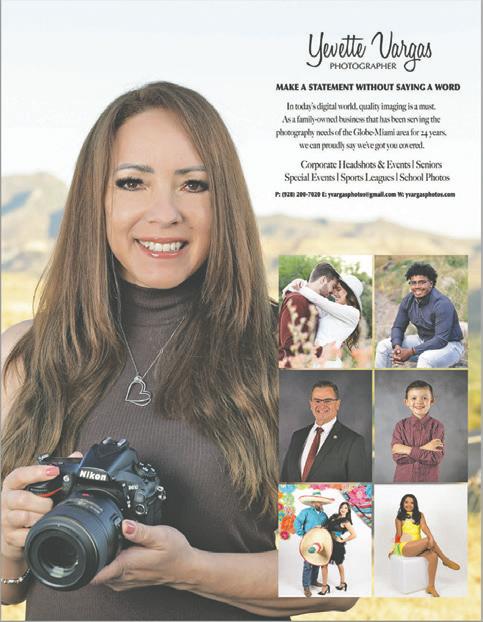



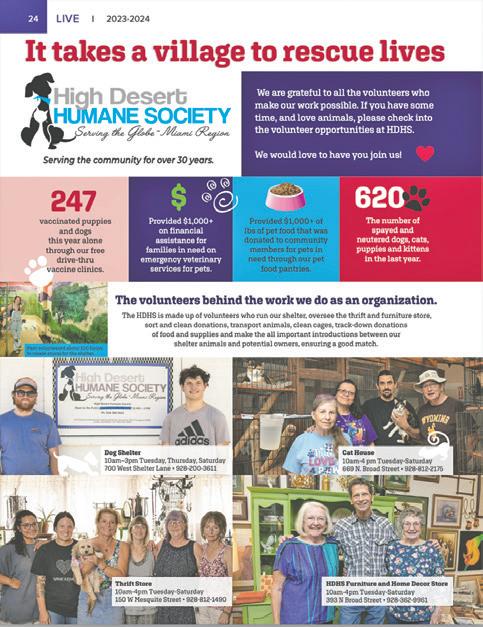
• Non-profits receive special rates for ads and sponsored content. Tell your story.
• All-new professional photography packages give your business year-round images.
• Embedded links and social media packages to leverage your exposure.
• Customized page layouts for business & industry which elevate your message.
